Our next stop was Busan, one of the world’s busiest sea ports situated at the southeast corner of the Korean Peninsula.
This city is quite similar to Chongqing for a couple reasons:
- Both are mountainous port cities with scenic views stretching from waterfront to funky buildings on steep hills
- Both exploded in population and political importance in the past century through massive migration of war refugees (Japanese invasion vs. Korean War), and some of the top tourist attractions were a direct result of such refugee settlements
We had originally hoped to spend 2-3 days here, but scheduling constraints squeezed our time to just under 1.5. Stormy weather further prevented us from seeing the quaint hilly neighborhoods reminiscent of some K-drama scenes. We’d have to go back some day.
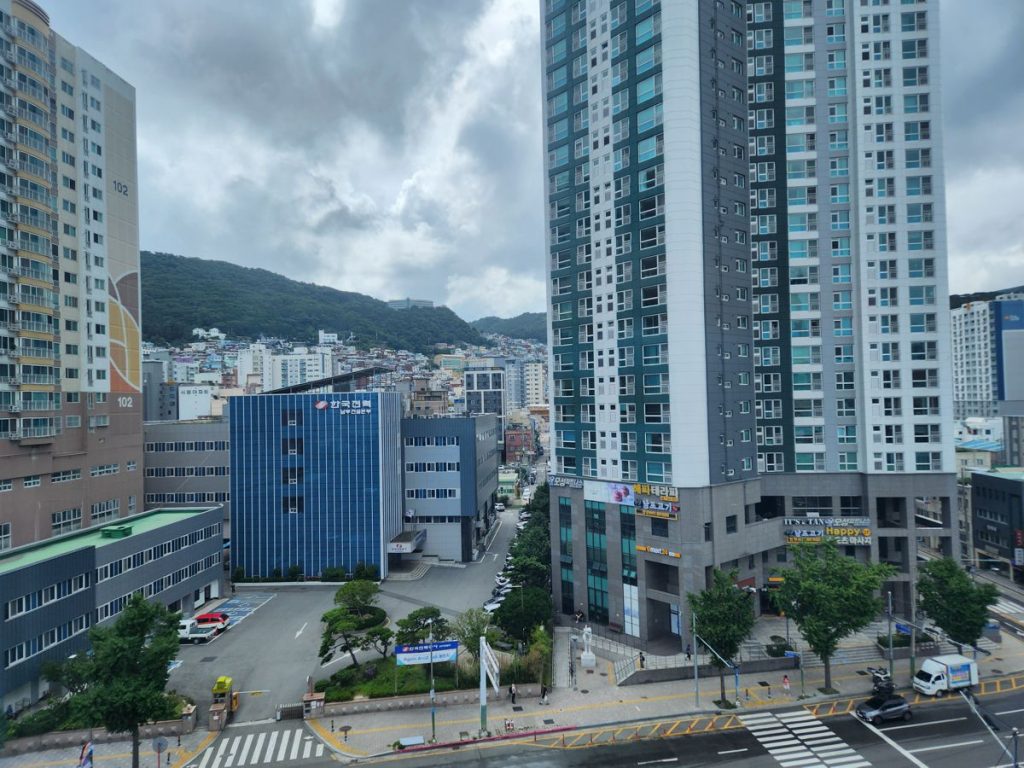
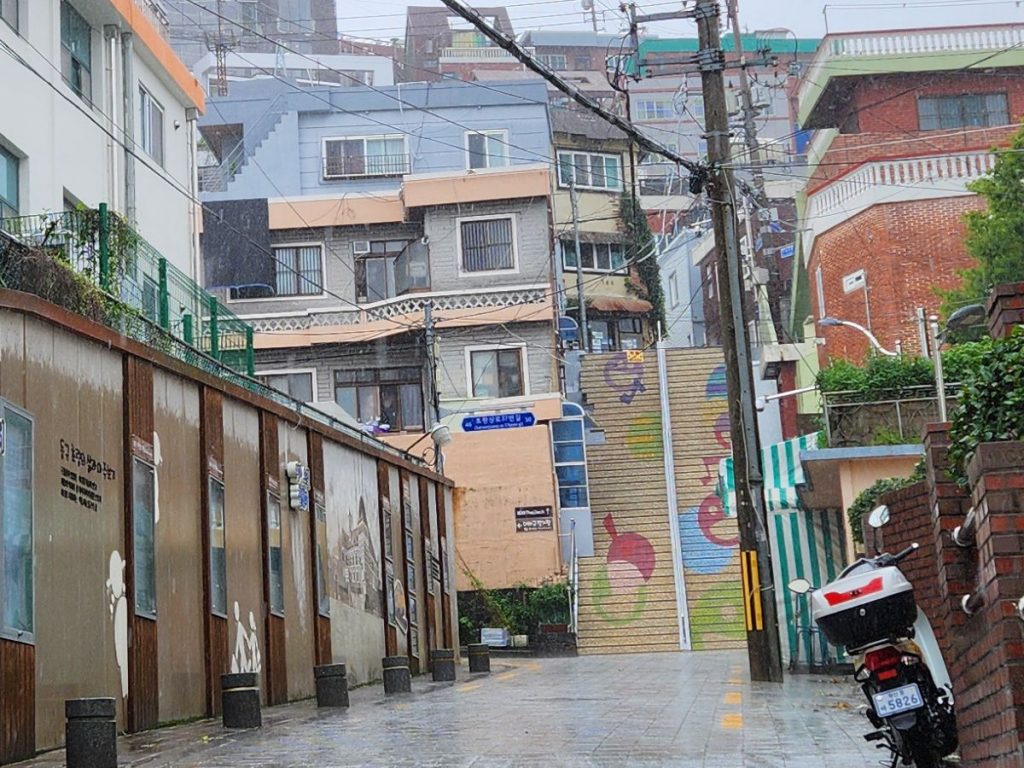
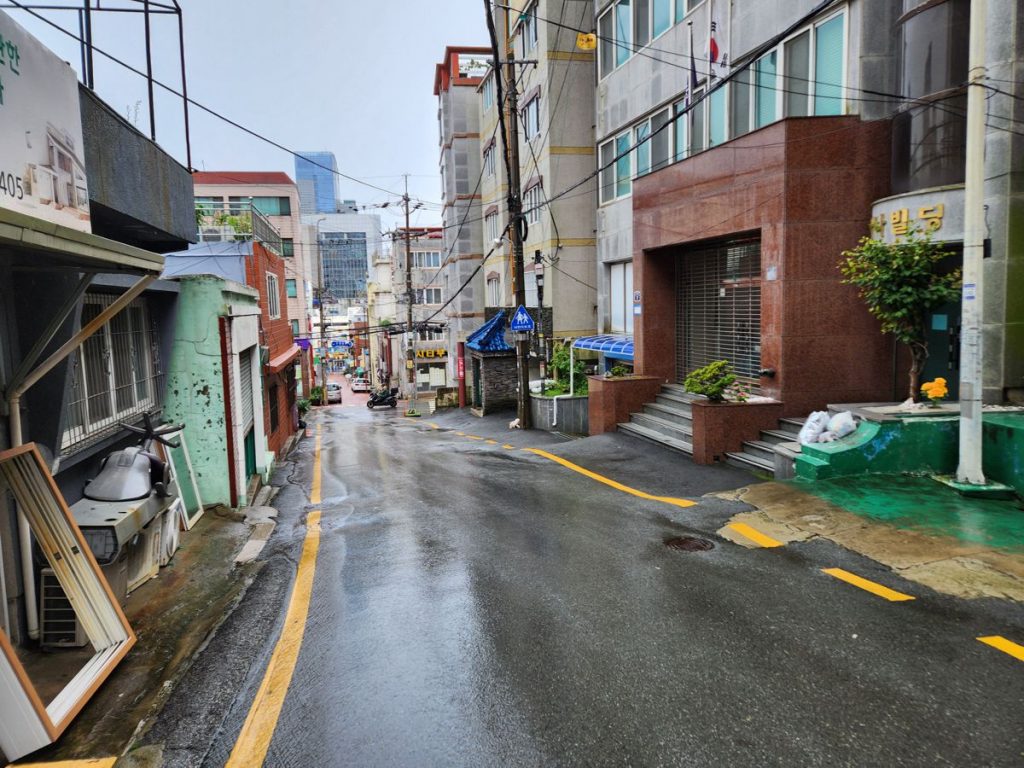
Train to Busan
The most famous train route in modern cinema was entirely unremarkable. Thank goodness. Tickets were easy to book on the KTX website, and I’m not sure any conductor actually checked them. The seats looked more tired than their counterparts on Taiwan’s HSR (newer) and Japan’s Shinkansen (older), but the ride was fast, on schedule, and comfortable.
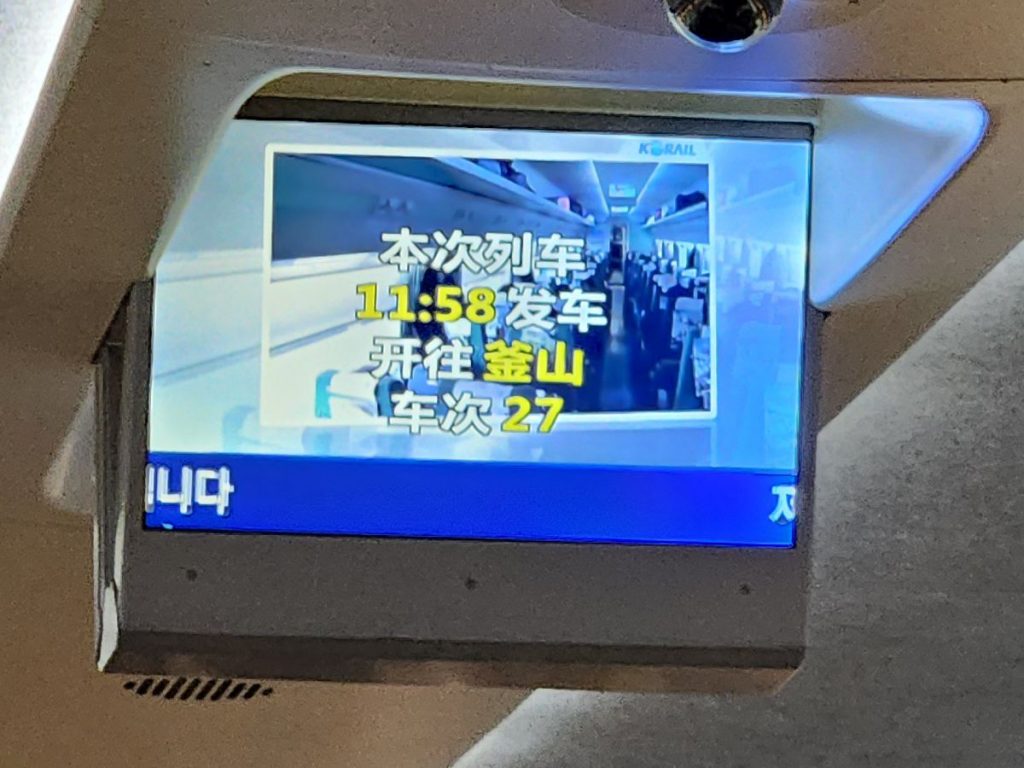
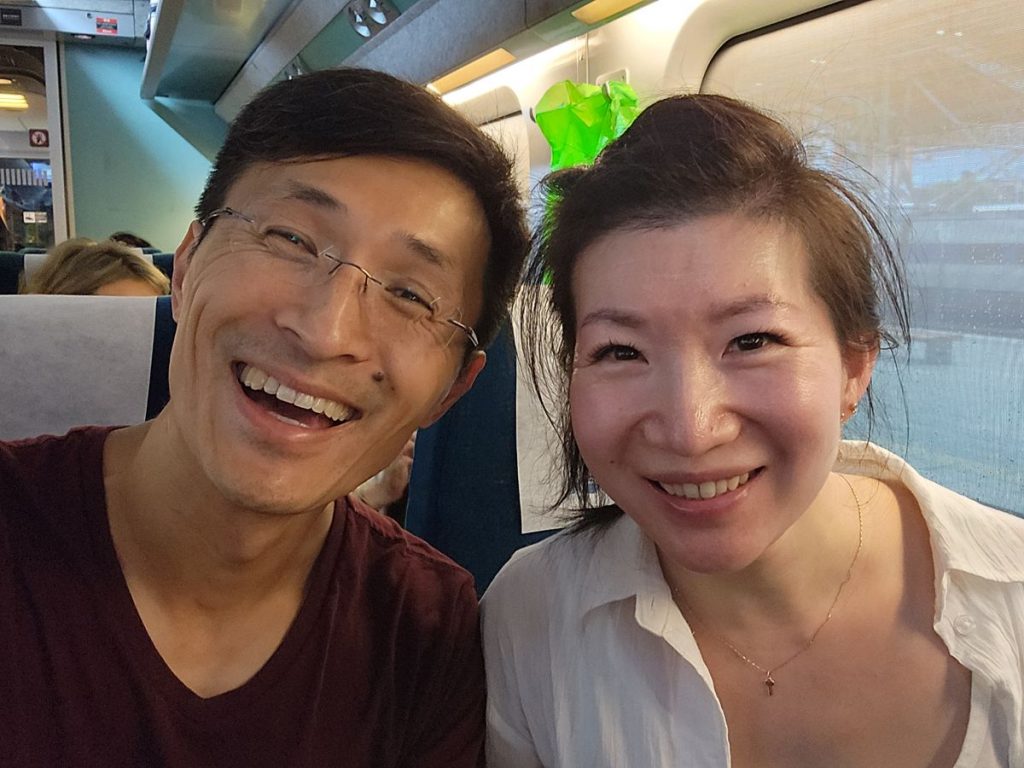
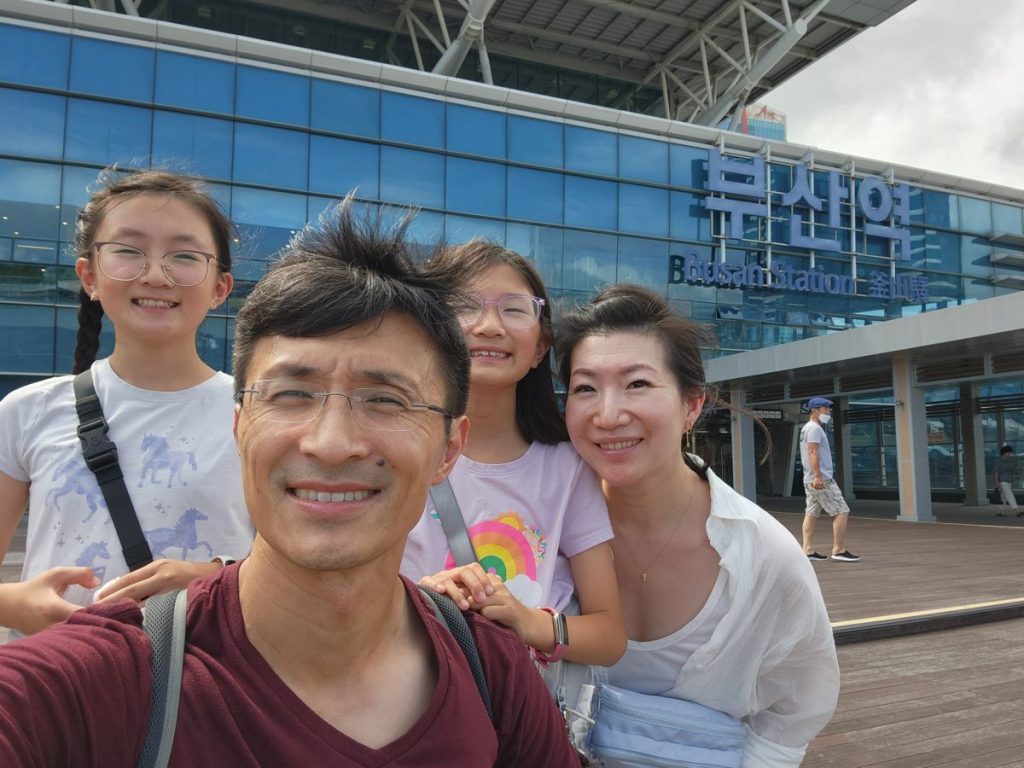
Gukje Market, Gwangbokdong, and BIFF Square
We booked our hotel (Hound Premier Nampo) in the middle of these commercial areas, and can’t really imagine a better location to be. On paper, I had questioned if anyone should care about so many “markets” and “food streets” in such close proximity. Once there, we felt blessed being able to get to so much stuff within a short walk.
On one end of this vast pedestrian shopping area (Gukje Market) were aunties selling slippers and plastic buckets. On the other end (BIFF Square) were brightly-lit stores specializing in designer iPhone cases and photo sticker booths. Right in between were a huge array of restaurants, including a full street lined with tanks of fresh seafood. It was like having Times Square, Chinatown, and Chelsea Market pushed together… but even better.
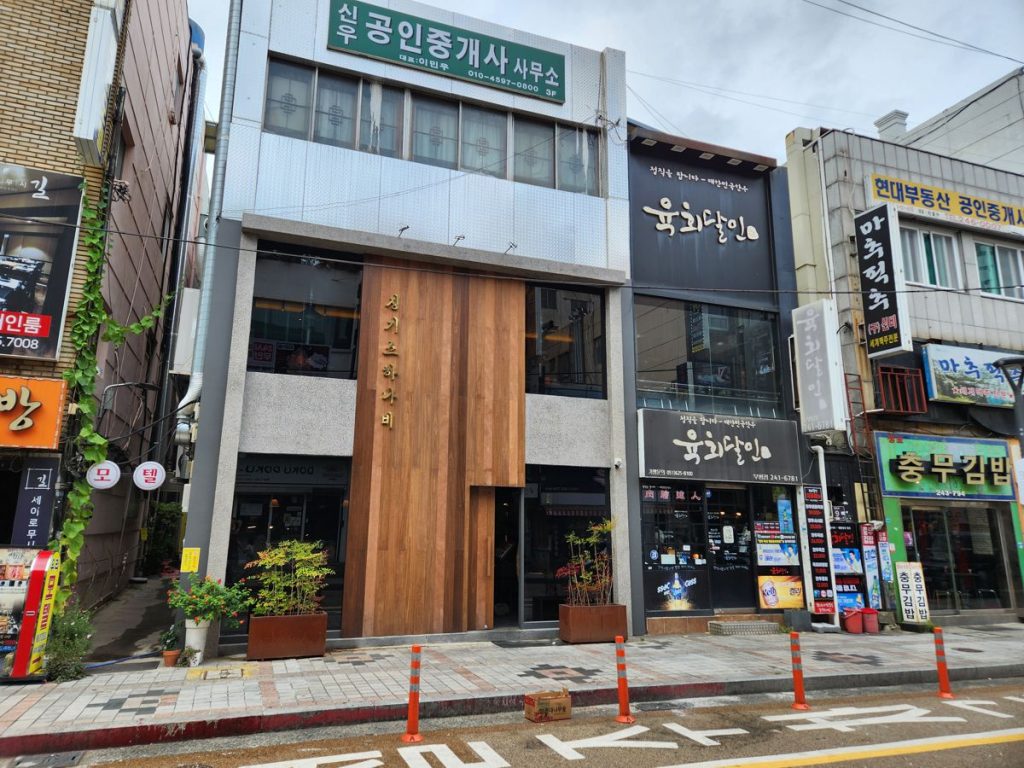

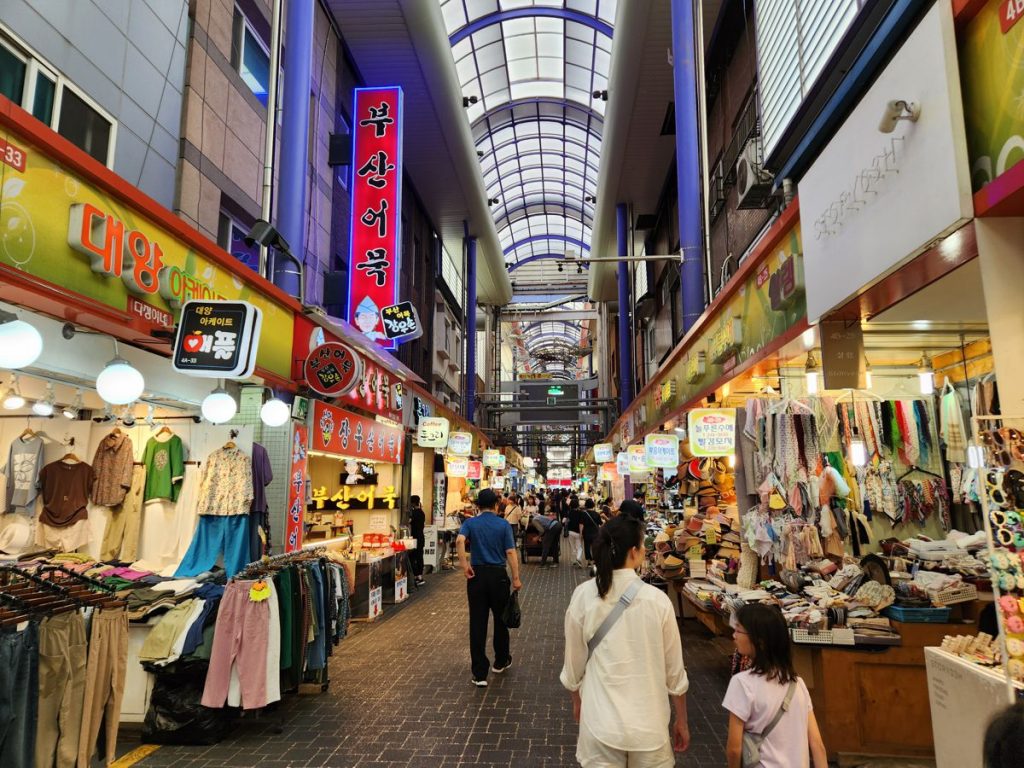
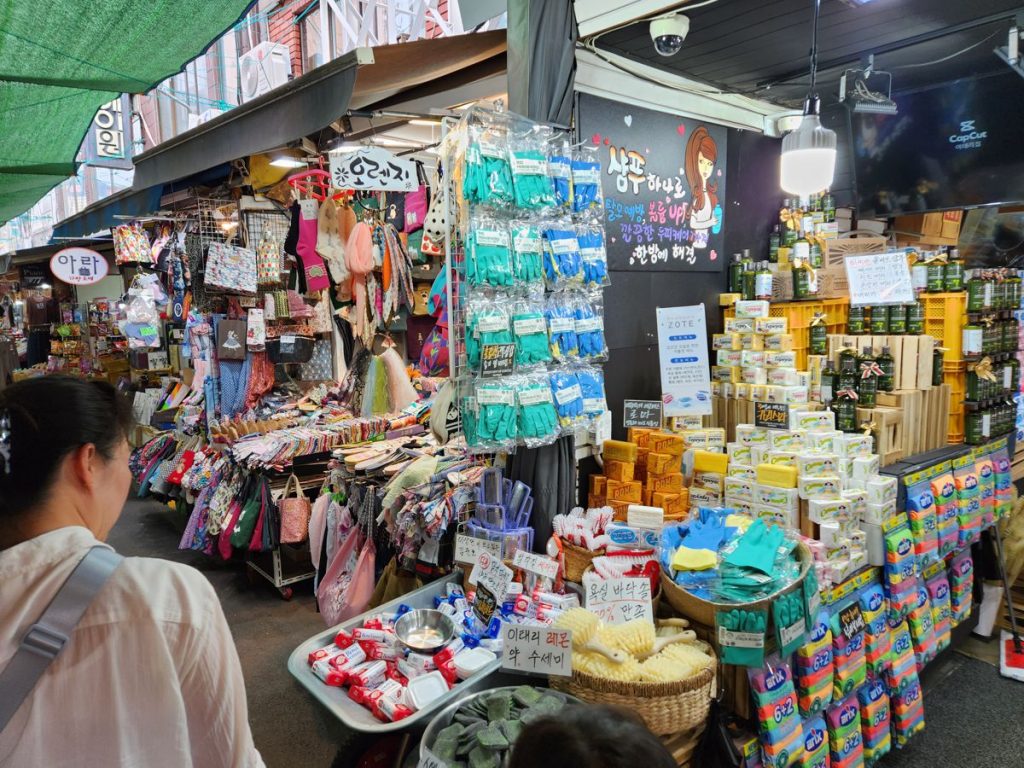
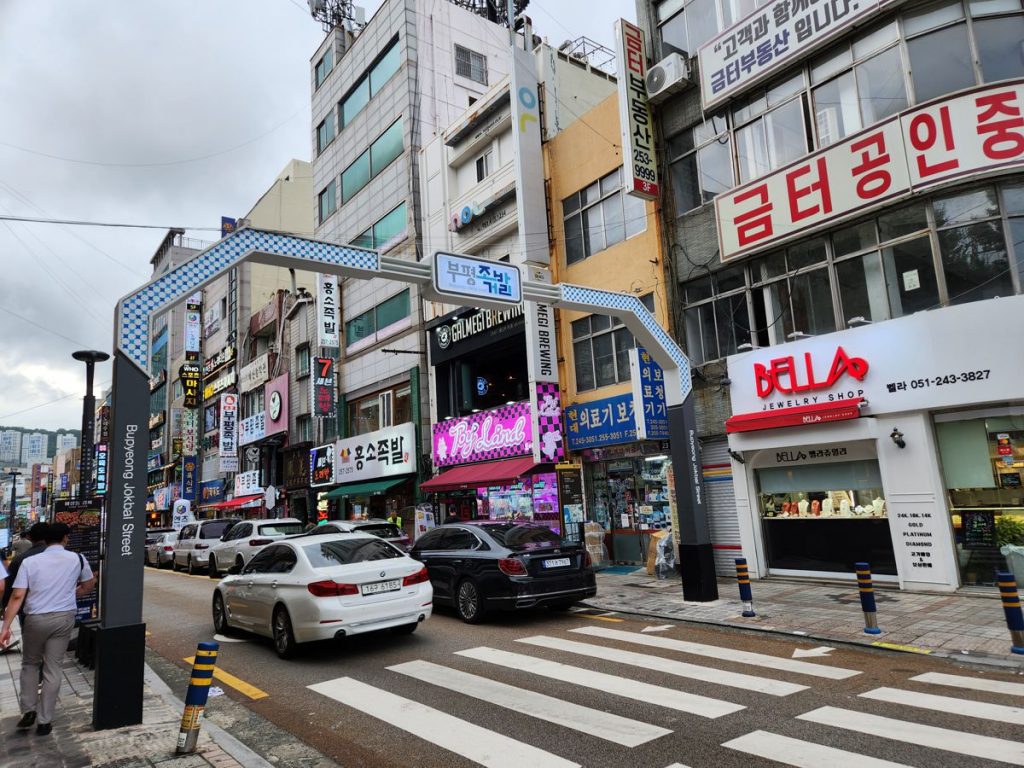
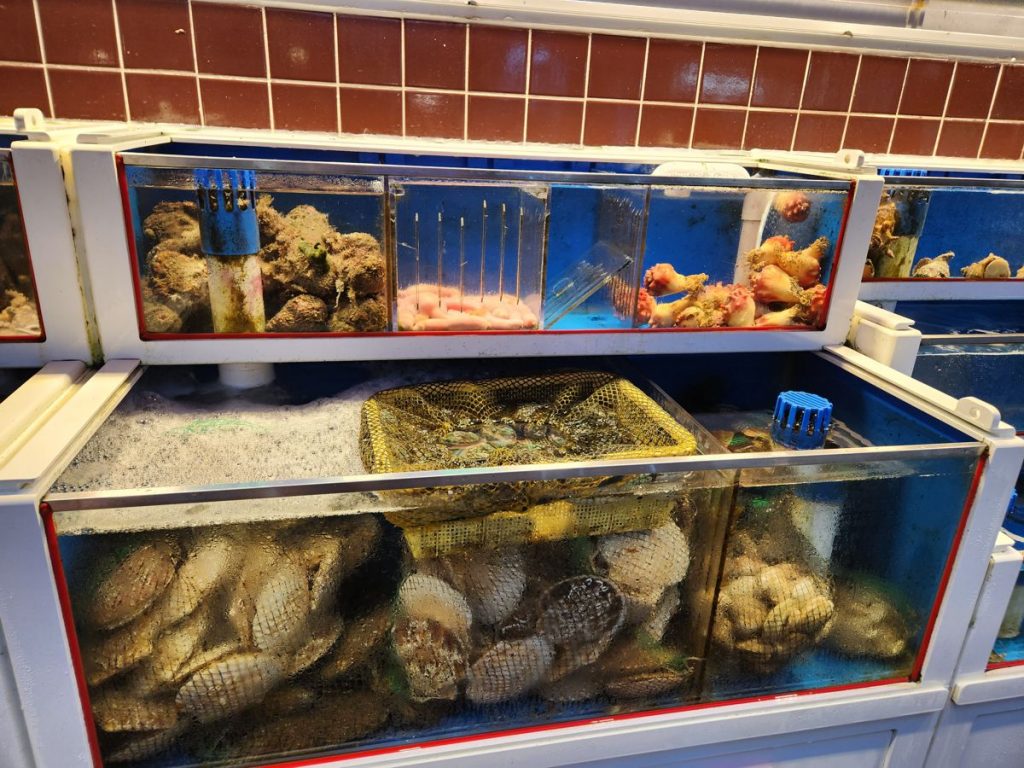
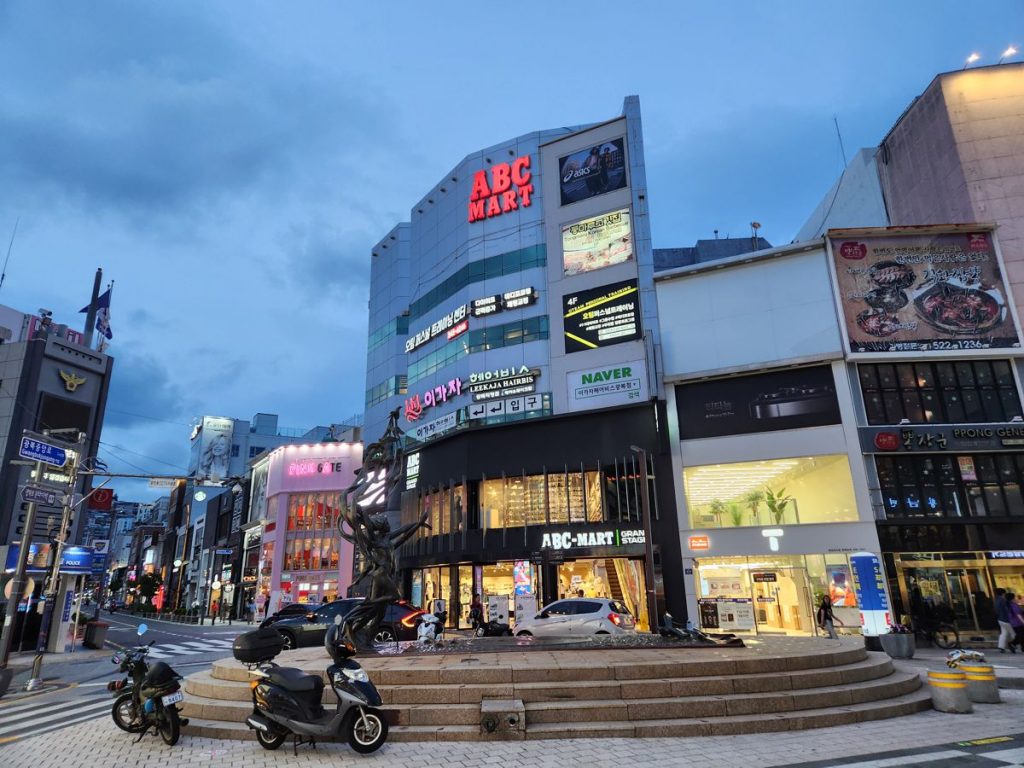
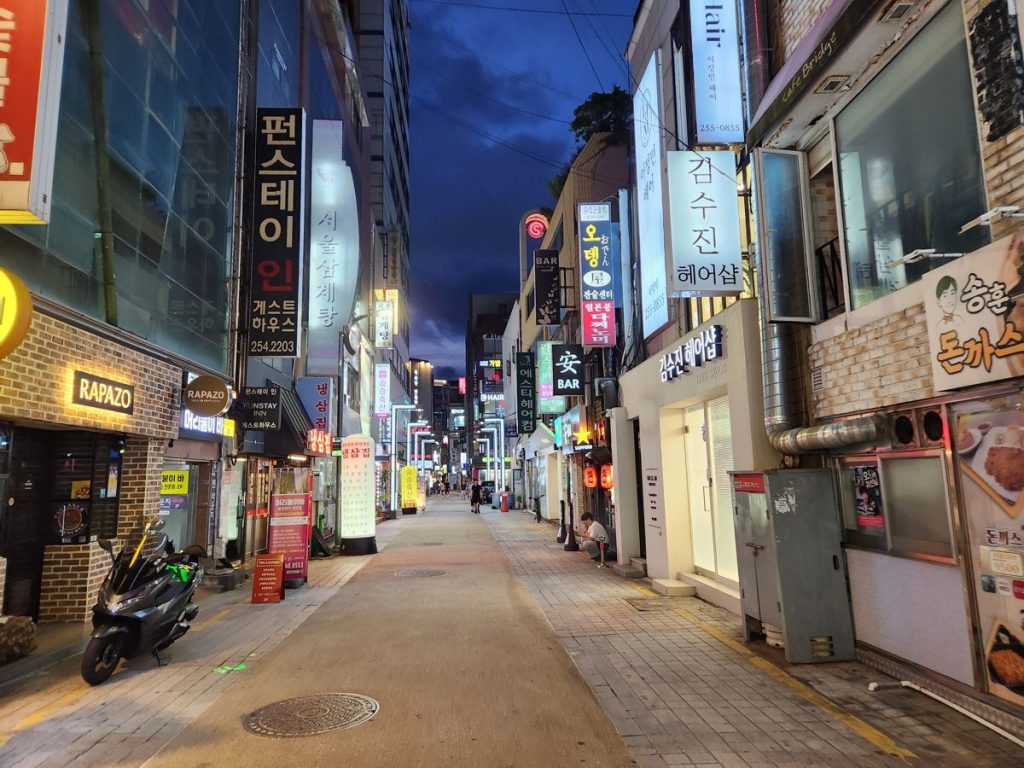
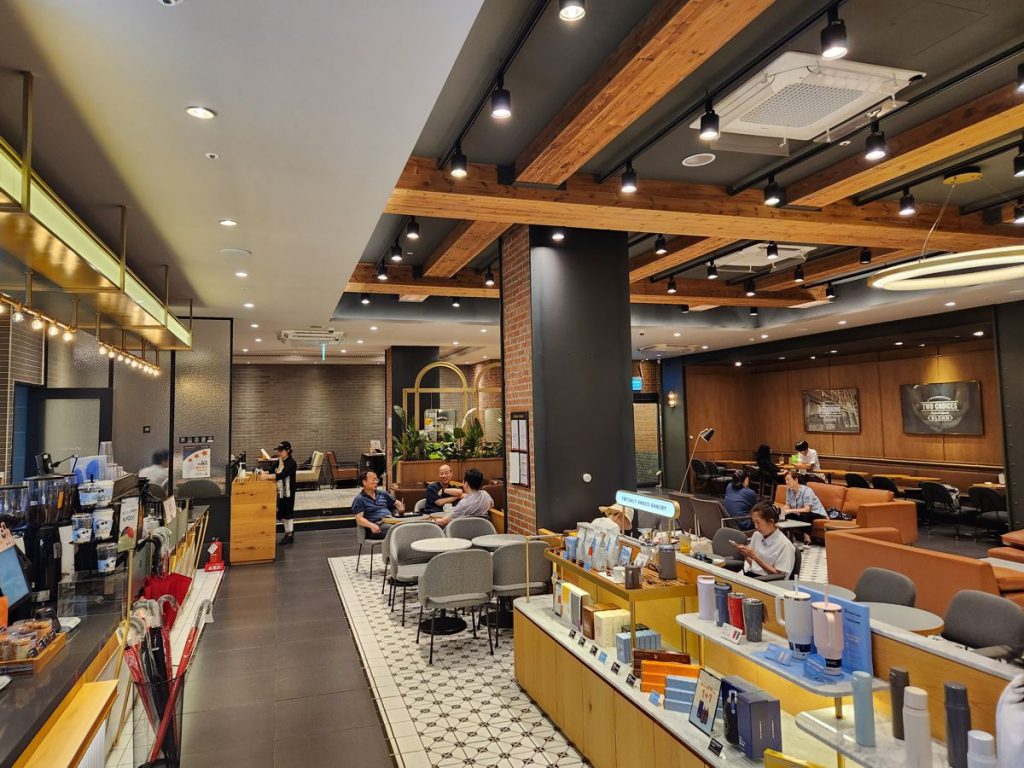
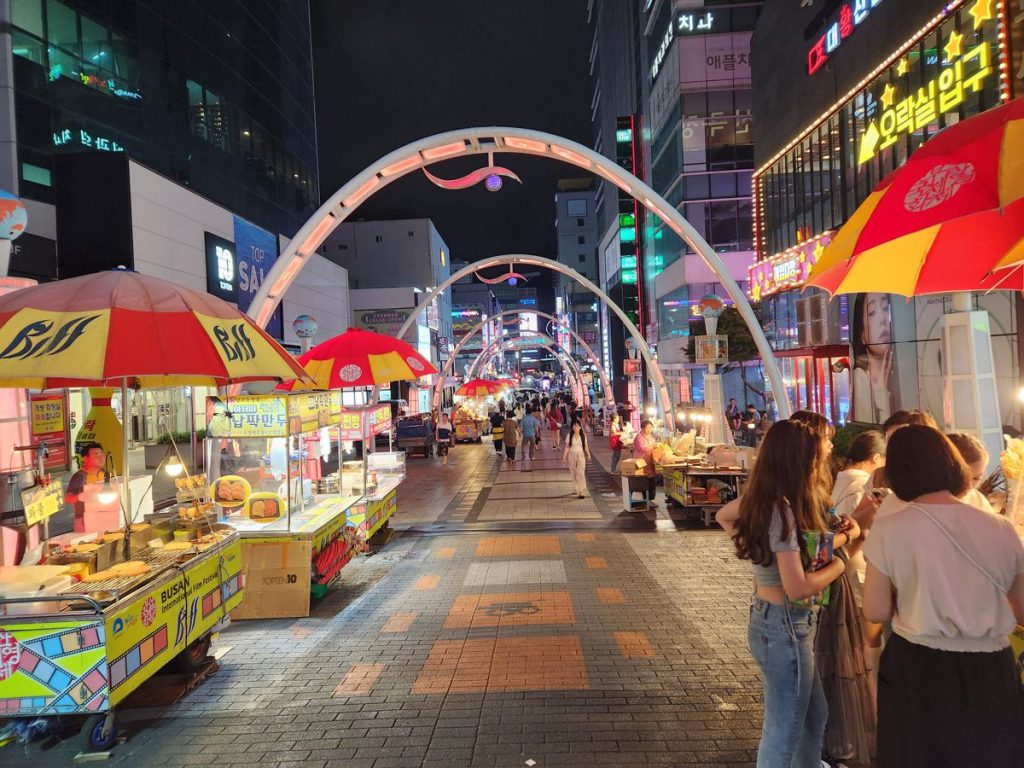
We enjoyed a lovely break at Ellie’s, the cutest cafe. I bought a bag of walnut cakes through a self-service tablet and blew through my monthly sugar budget. We also shared a bingsoo from a gorgeous dessert chain named A Twosome Place. We could have easily circled those neighborhoods 3-5 more times and not get tired of them.
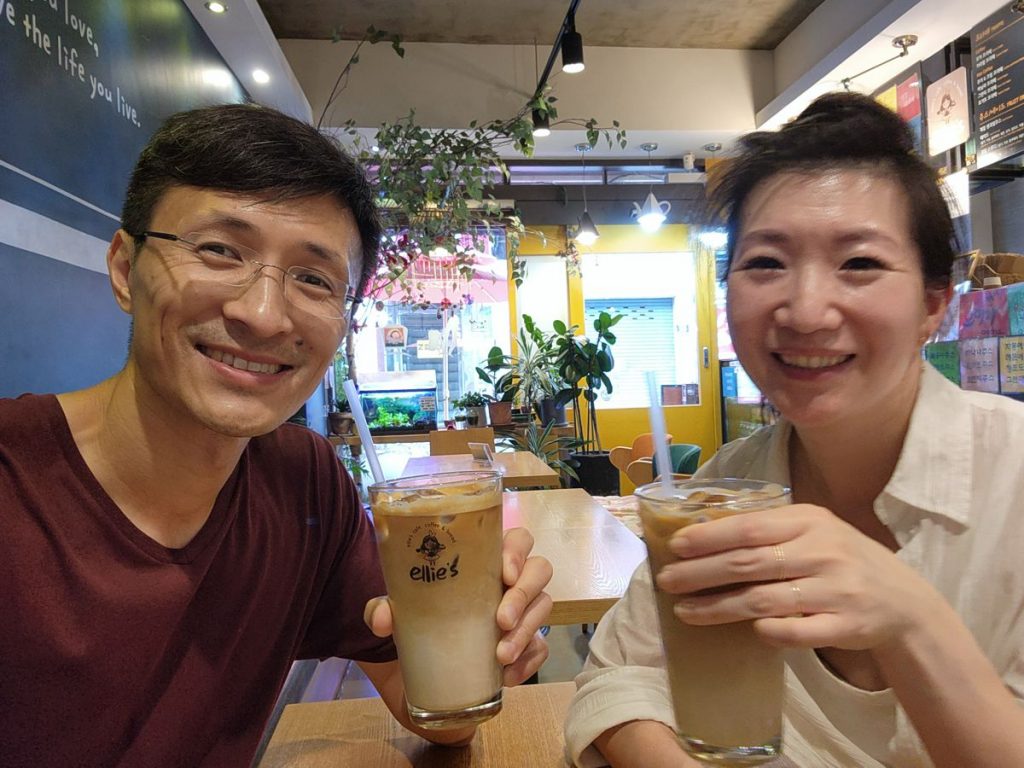
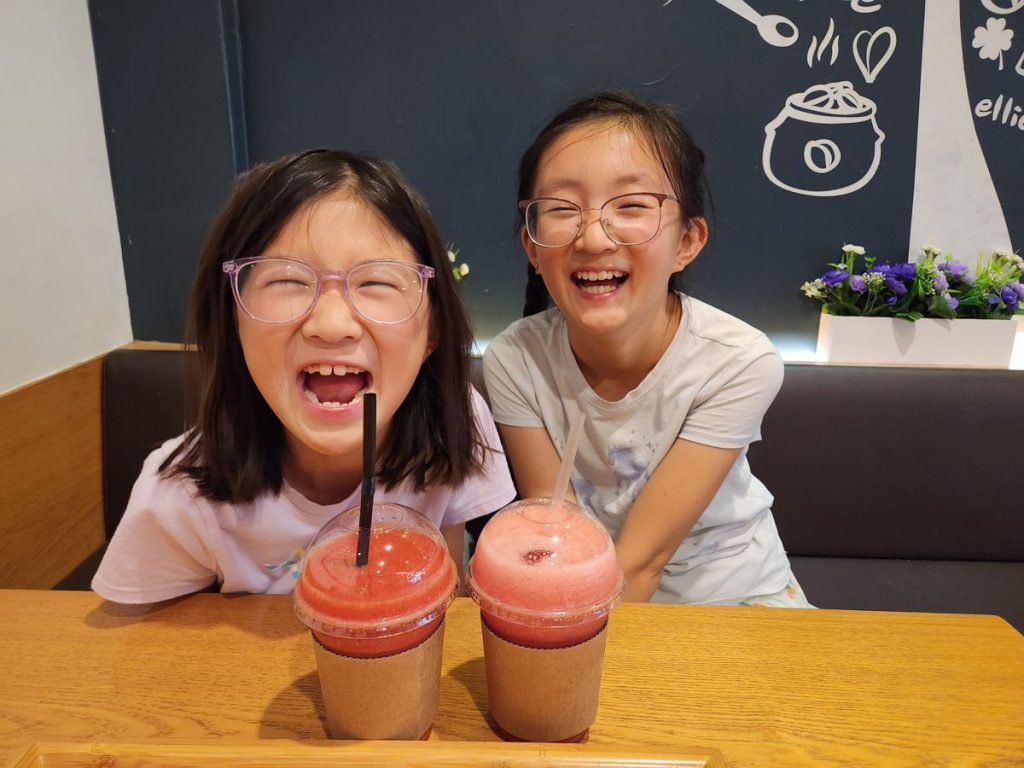
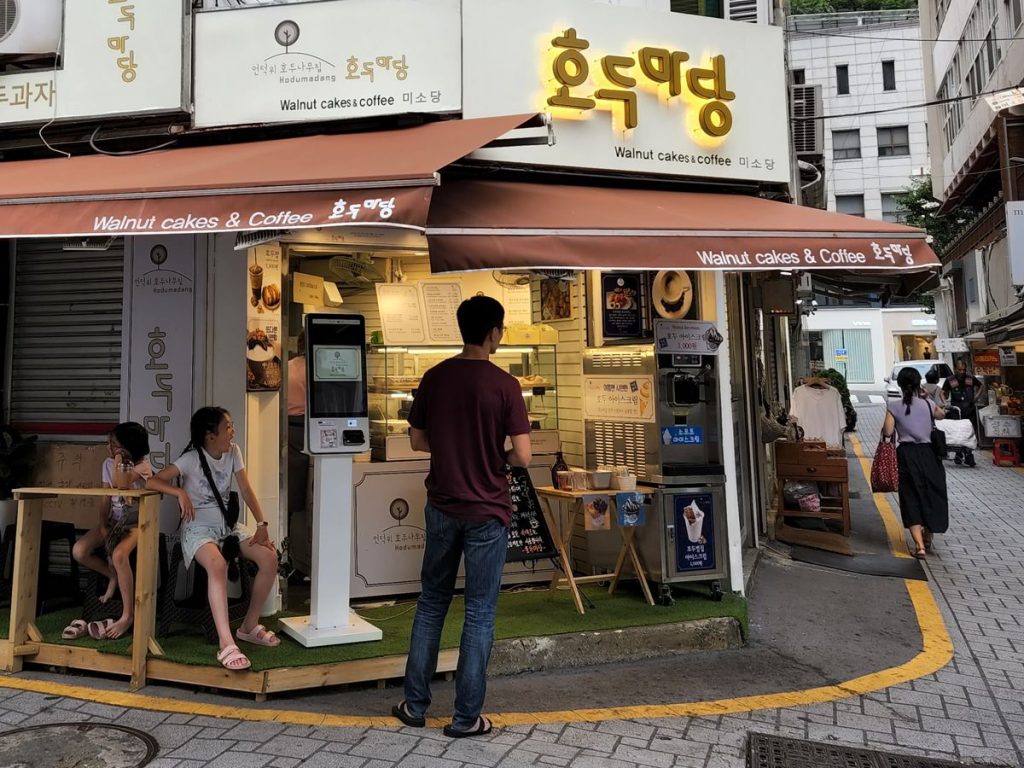
Dokdo Island Shrimp
For dinner, we went to one of those fresh seafood restaurants downstairs. Being tired from jetlag and not really knowing how these restaurants worked, we picked a random animal from the menu and asked for a small portion. Then we got a plate of boiled shrimp with awfully large heads. These were the Dokdo Islands shrimps.
We had no reason to know what or where the Dokdo Islands were, if not for yesterday’s hour-long airport train ride continuously blasting PSA about the South Korean government’s territorial dispute with Japan. Who knew that a political propaganda video can be so educational and also help a small business sell seafood? Our family was eternally grateful, too, as these were the juiciest and sweetest shrimp. No wonder the countries fought over some random rocks in the middle of the ocean.
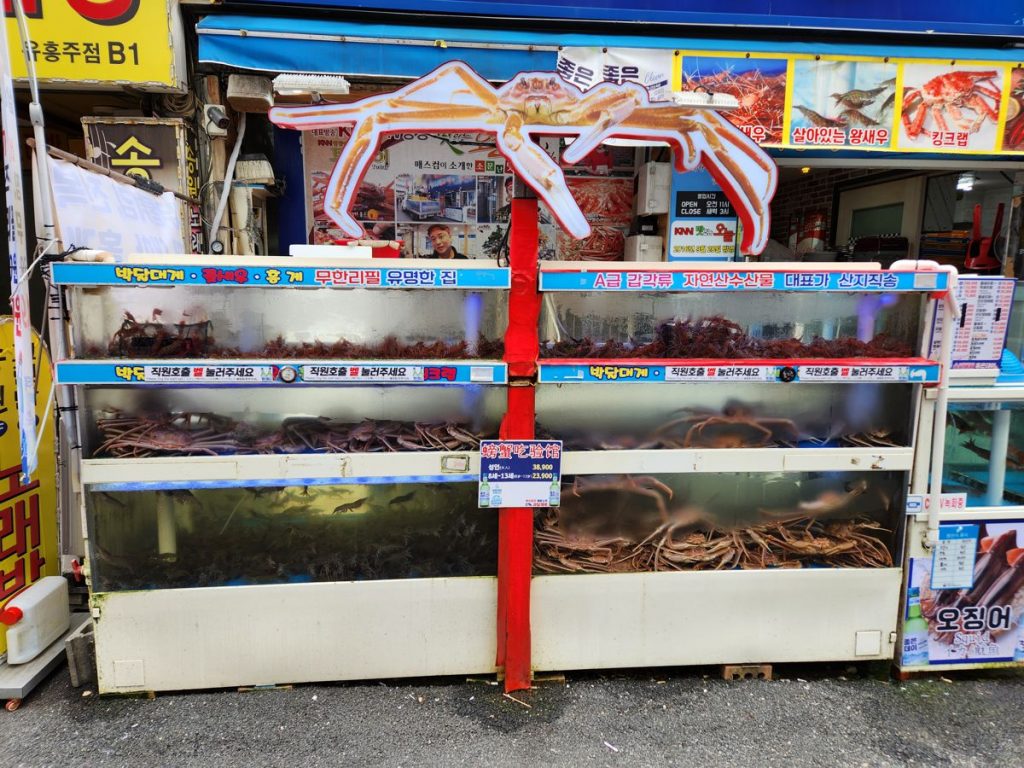
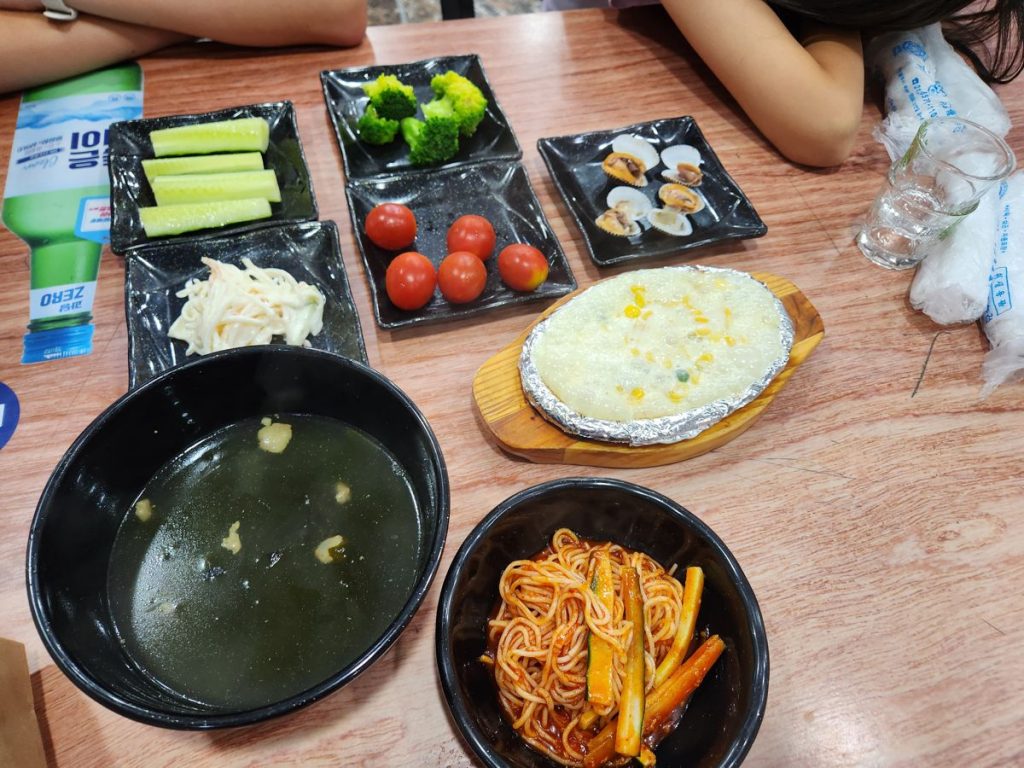
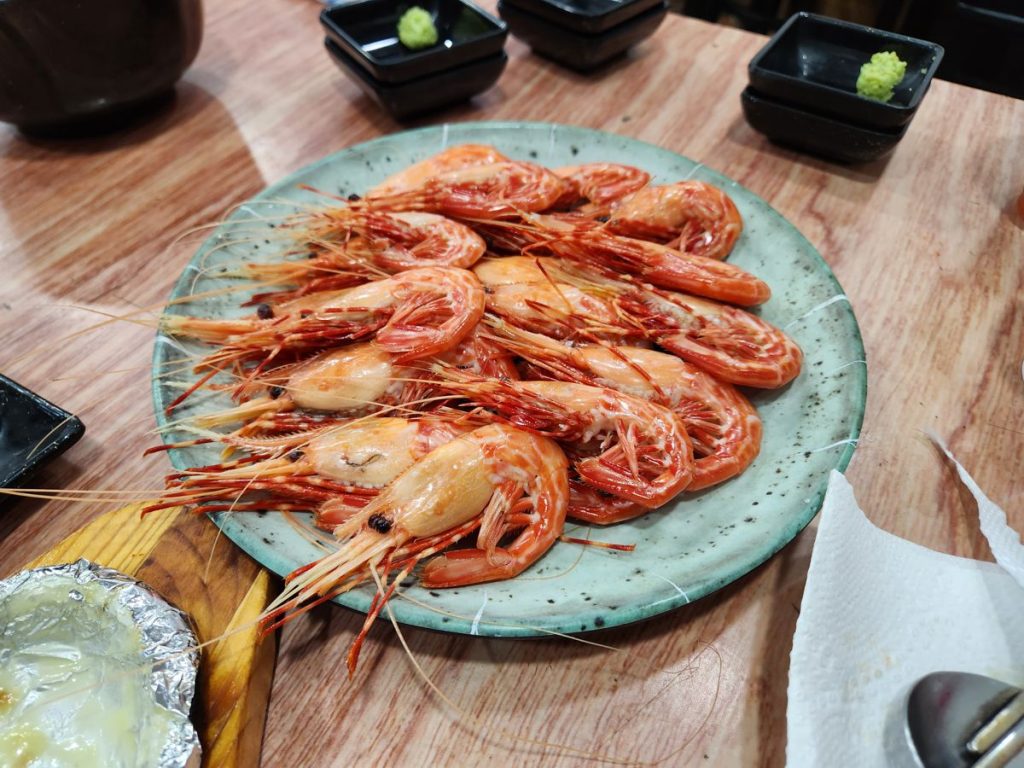
Jagalchi Market
According to Youtube food vloggers, the main reason to visit Busan was Jagalchi seafood market, steps away from BIFF Square. As a real market does, it was open for business at the crack of dawn. We arrived before 7am.
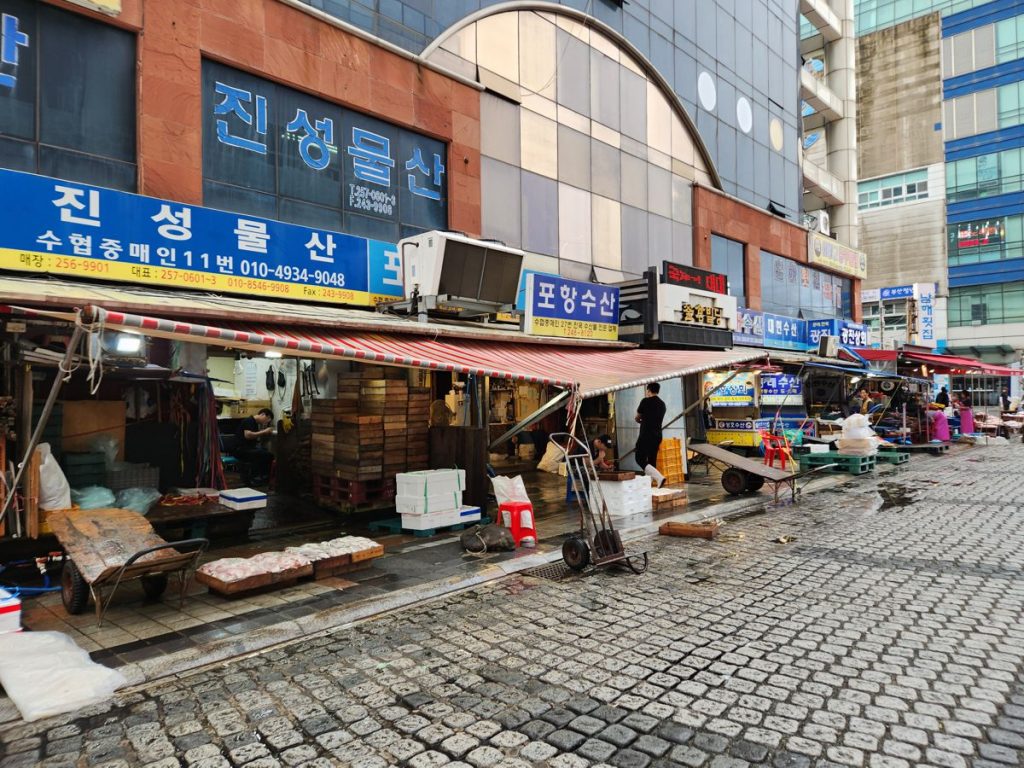
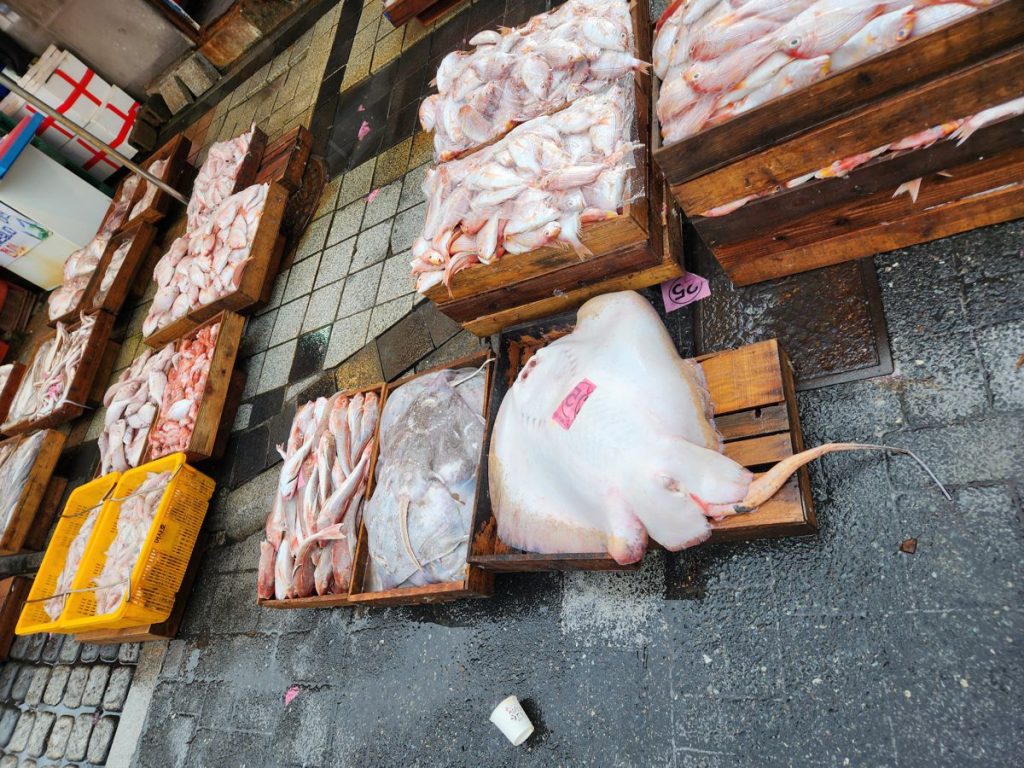
All sorts of seafood vendors lined the streets with impressive goods, but the real deal was in the 7-story building. We stepped in and were in awe – hundreds of vendor stalls, each operating over a dozen tanks, covered the first floor. At first glance, all the vendors had similar stuff… fish, crabs, clams, urchins, and a bunch we couldn’t name. I’d have a plentiful good time just browsing through this place as a free aquarium. Before we did much of a casual stroll into the market, though, an auntie stopped us to make her offers with a picture menu.
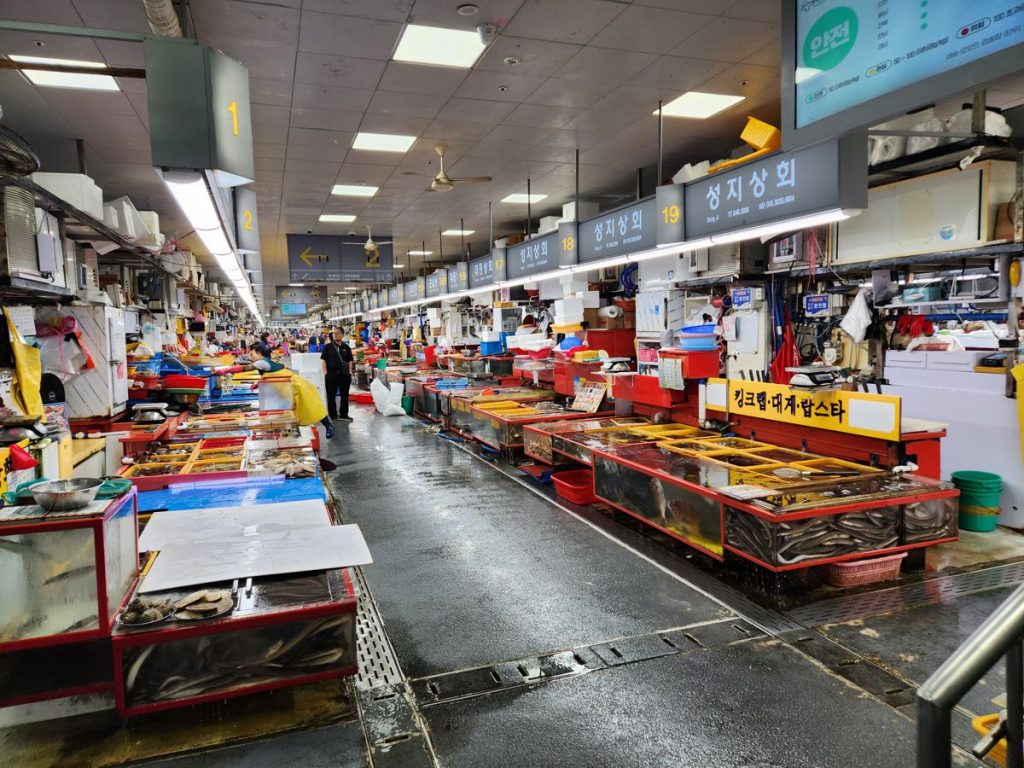
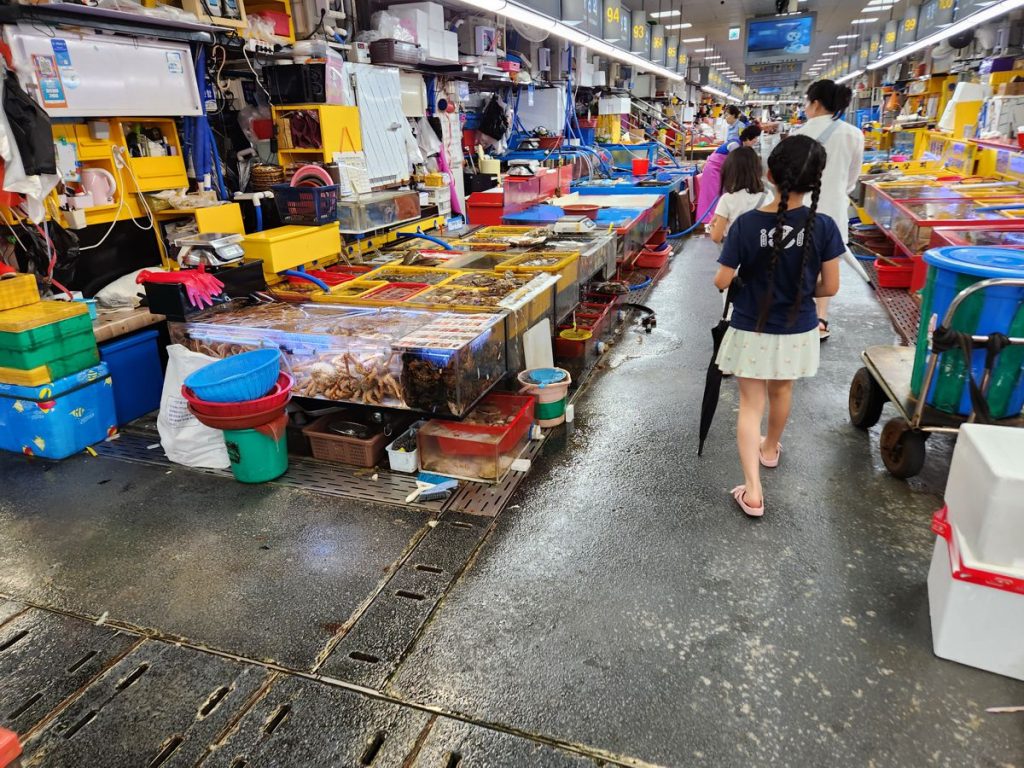
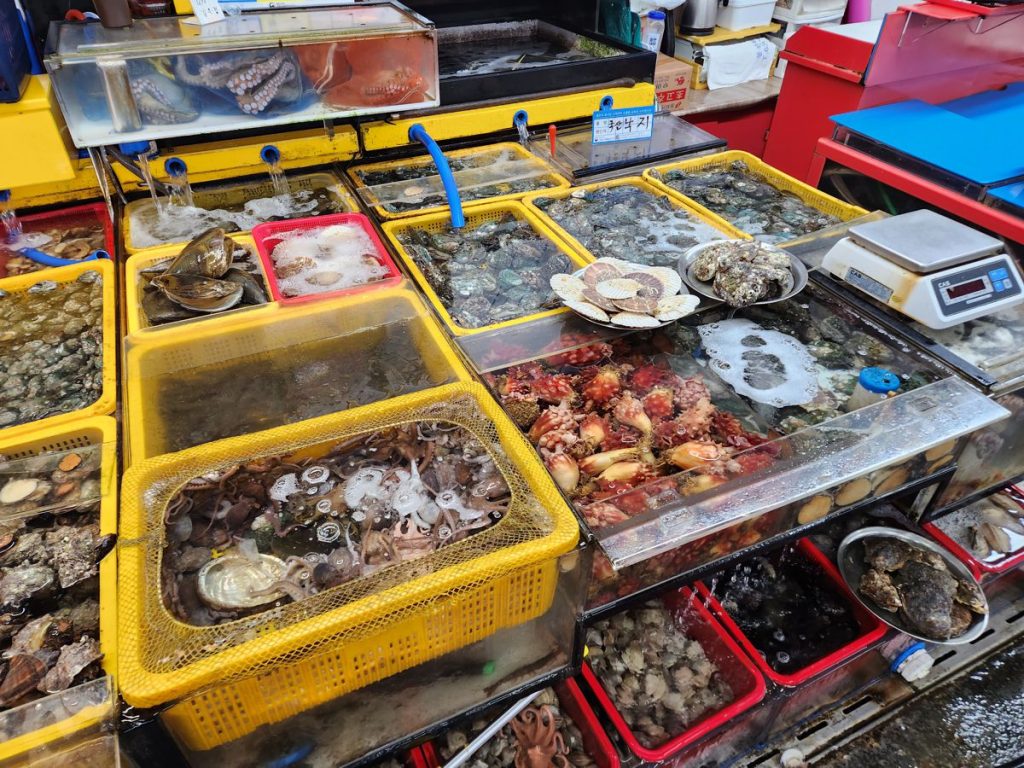
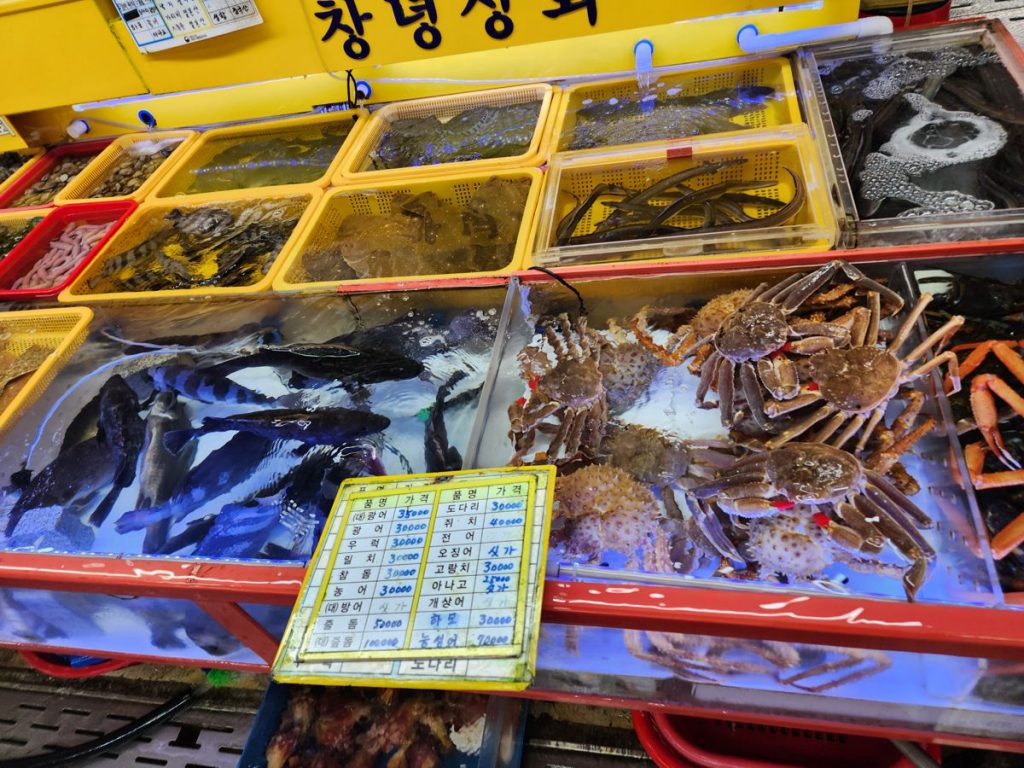
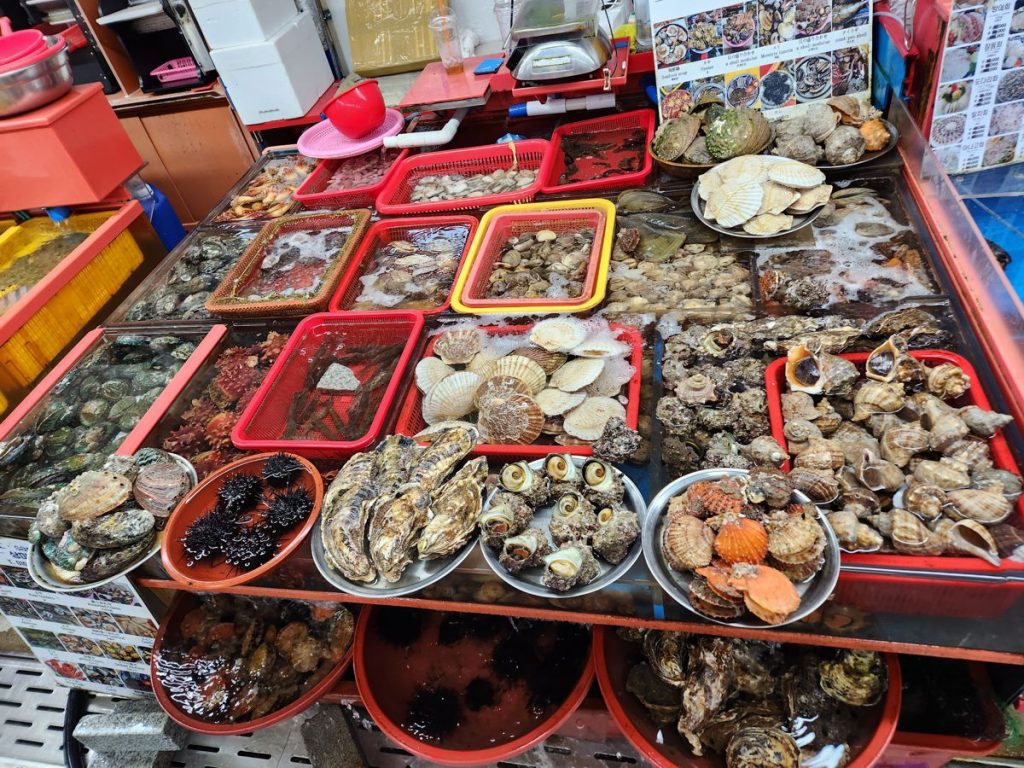
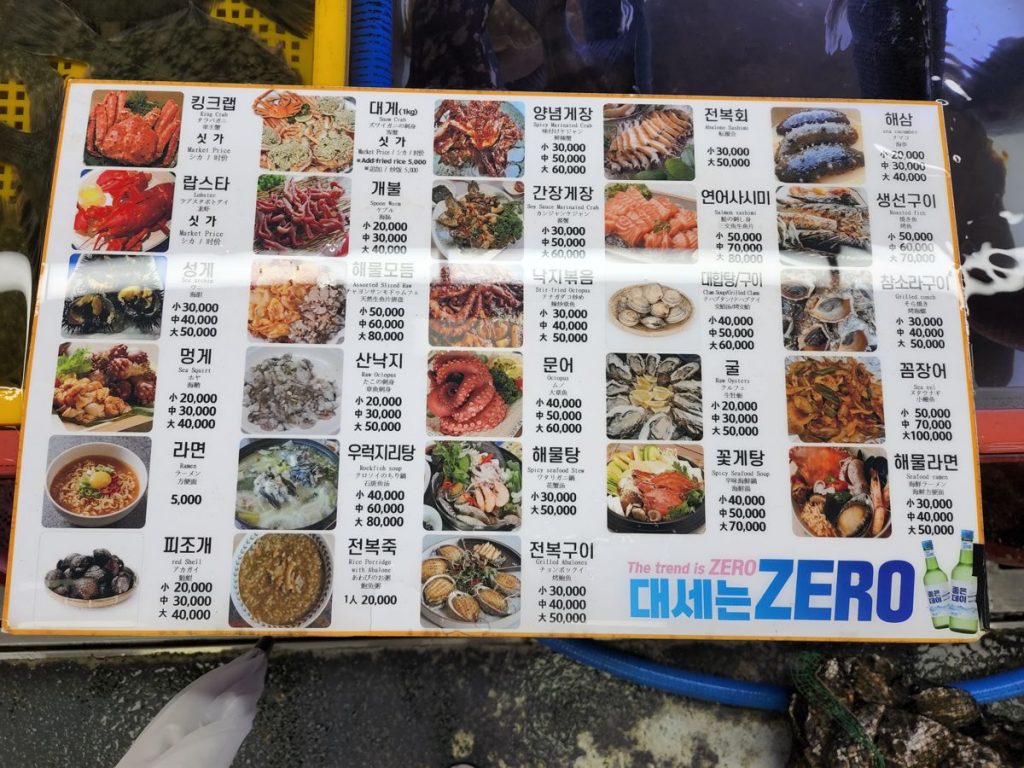
I don’t know how much Korean ladies think people eat, but this auntie was nonstop in her sales pitch. We insisted on getting the “small” size for everything, though nowhere made it clear how the portions were defined. Frankly, we were here to eat, things looked good, and prices weren’t too scary. So we just kept nodding.
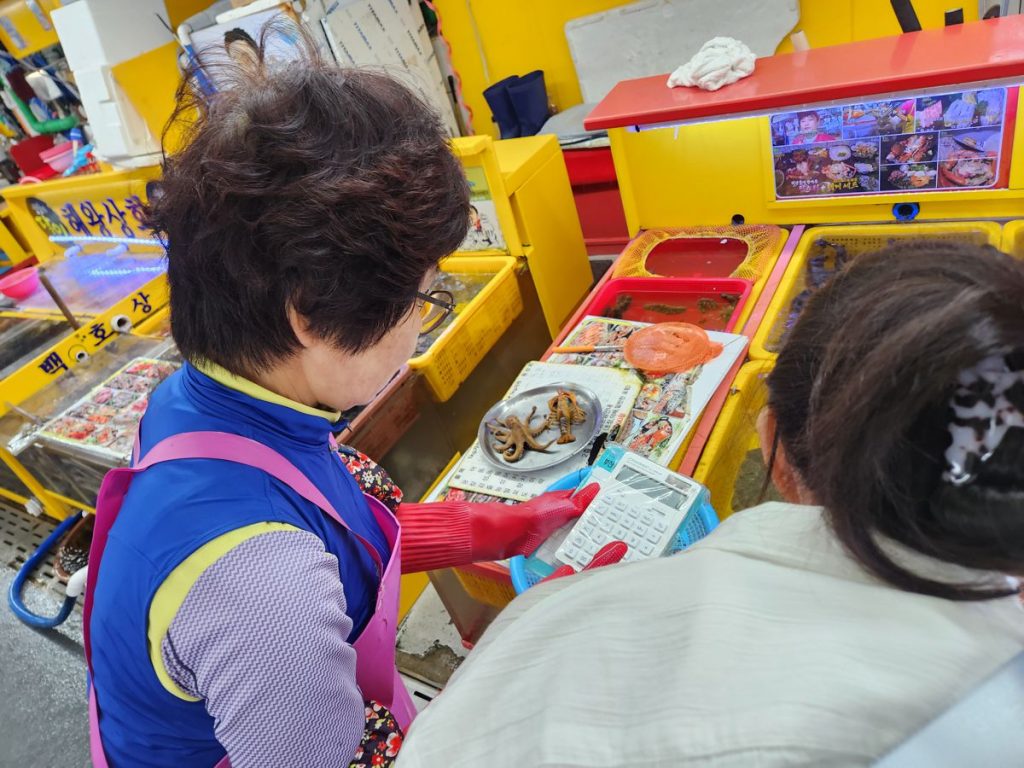
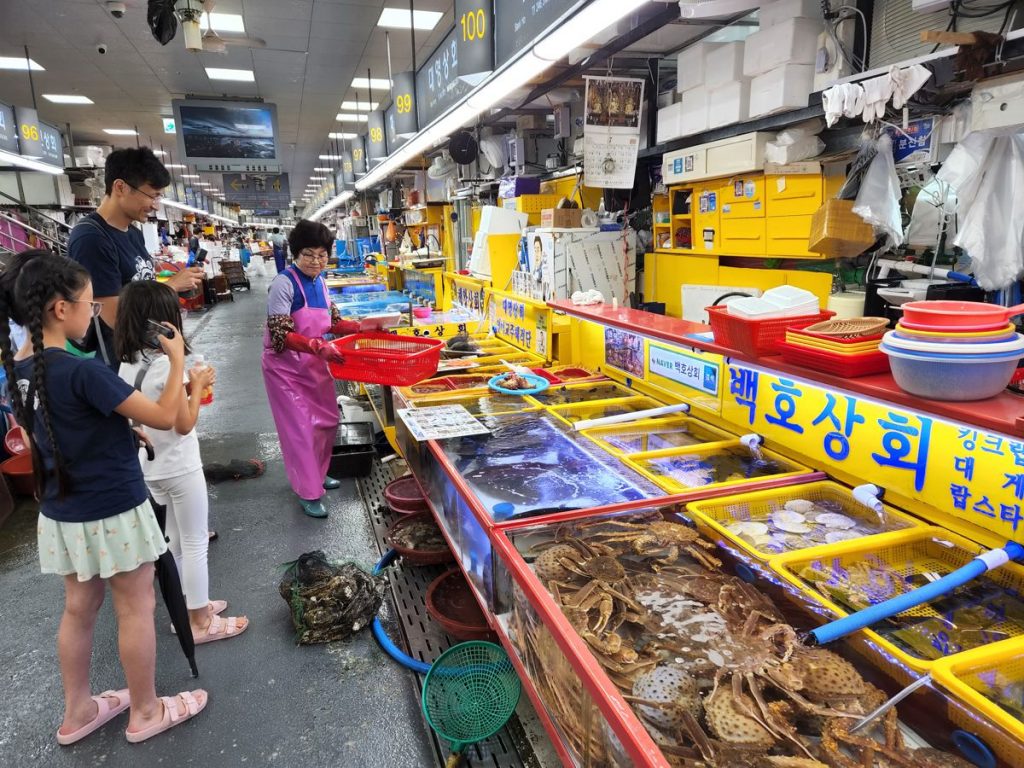
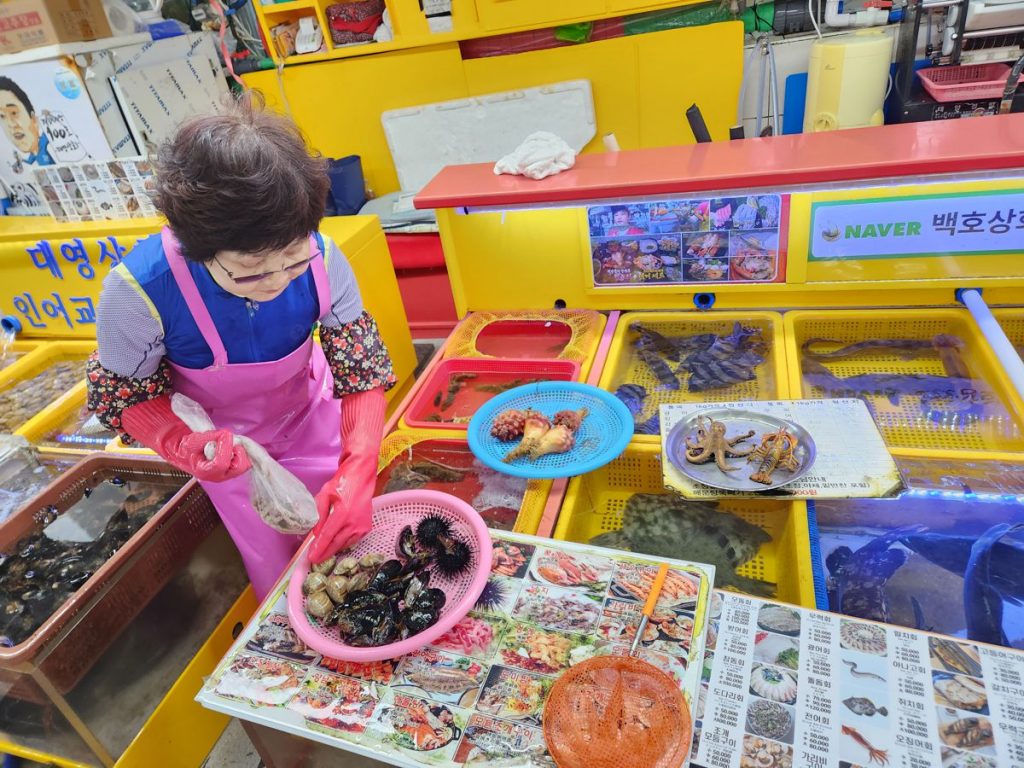
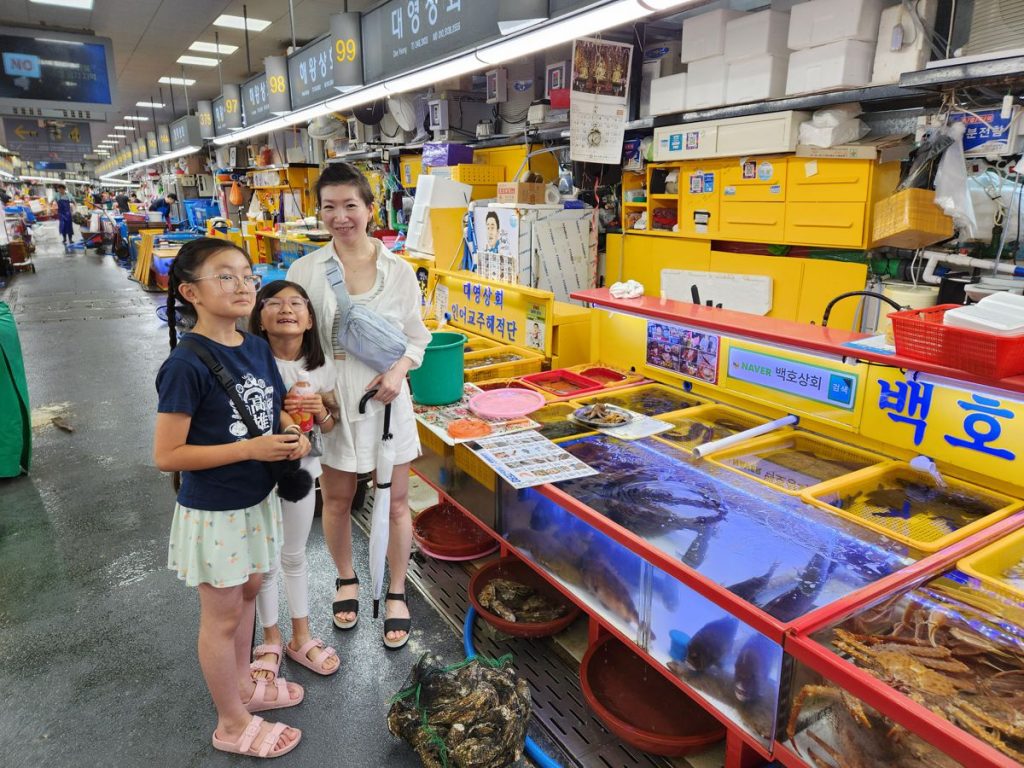
So we got a bunch: a whole sea bream, which the auntie scooped live out of the water; two eels, each about two feet long and extremely jumpy; two octopi, one of which managed to fully squeeze itself out through the knot in the plastic bag; a bunch of sea pineapples, which I had been curious about. Because we were so agreeable, the auntie threw in two sea urchins and a whole basket of clams and mussels for free. We were mesmerized seeing this savvy salesperson wrestle with these very living animals that we were about to consume. Meanwhile, an abalone at the adjacent stall was making its gradual escape down the side of the tank.
After a swift execution of our animals, the auntie took them and led us up to the dining area on the second floor, which was still empty when we arrived. We got seated and fresh dishes started to arrive on plates, while she phoned her cooking partner (presumably accusing her for being late to work).

Sea bream sashimi, sliced from half of that fish, was excellent. Everyone loved it, including the kids who did not previously eat raw fish. The other half arrived later fried. It was delicious, too, but I didn’t find as much wow factor in it.
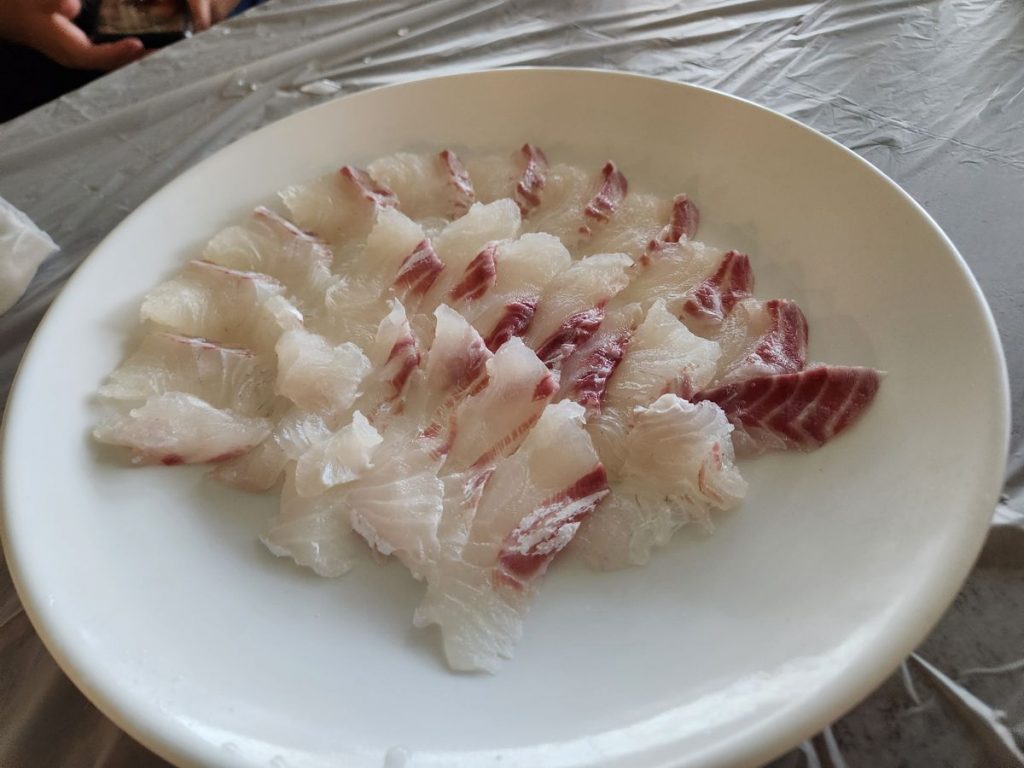
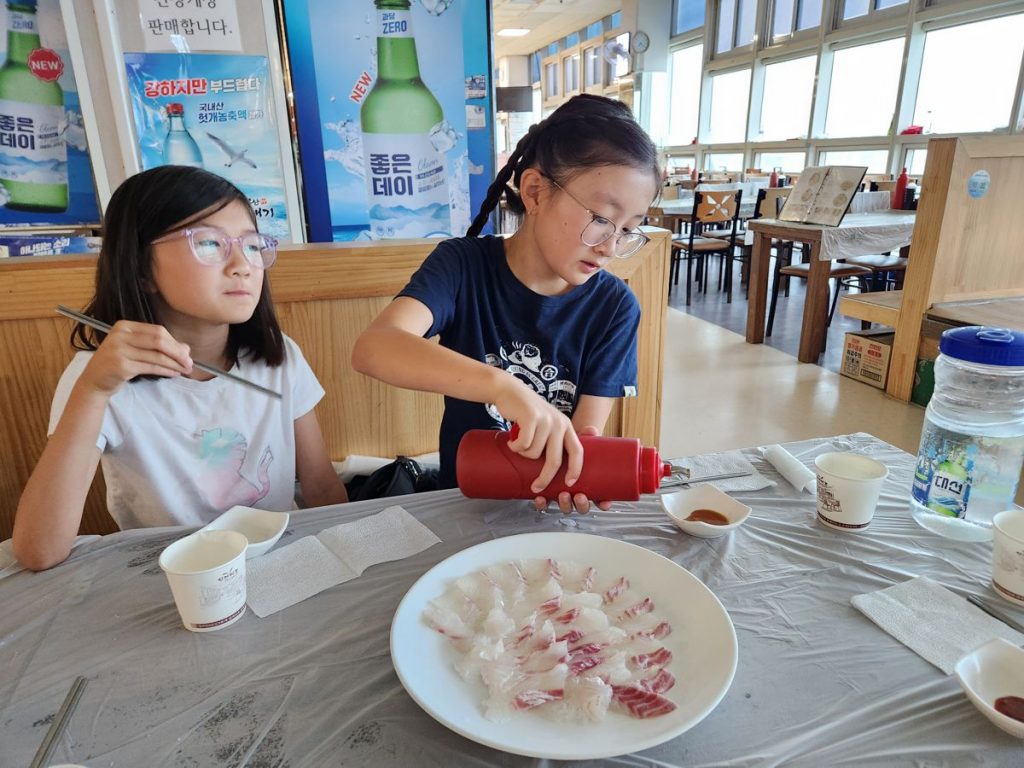
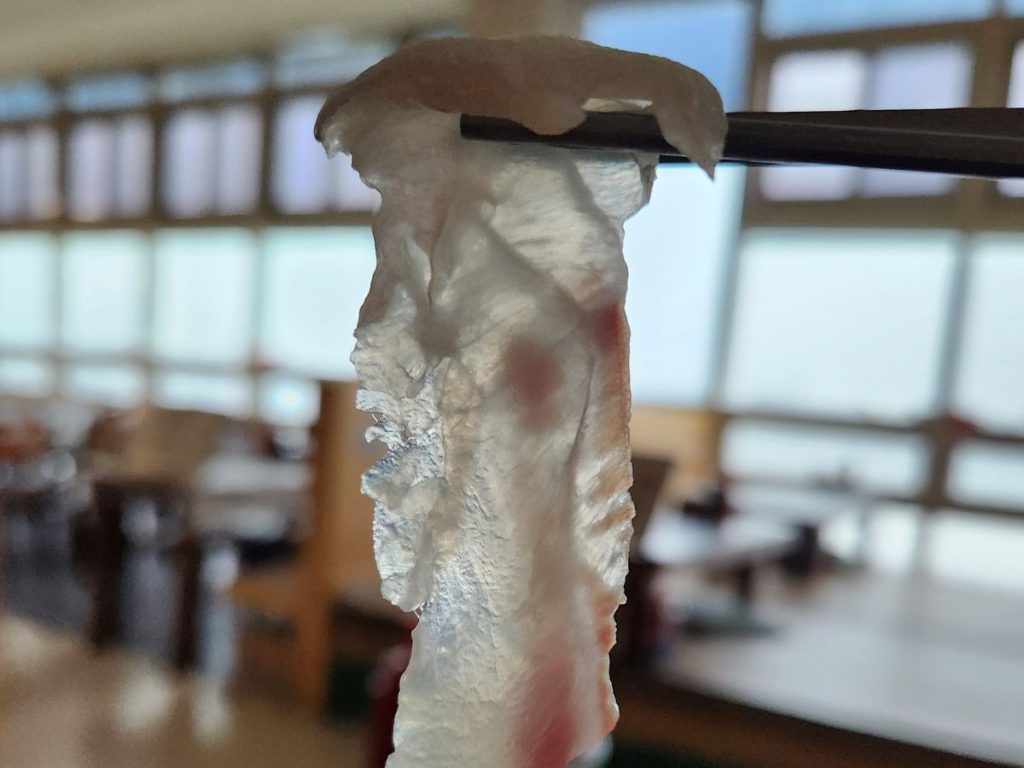
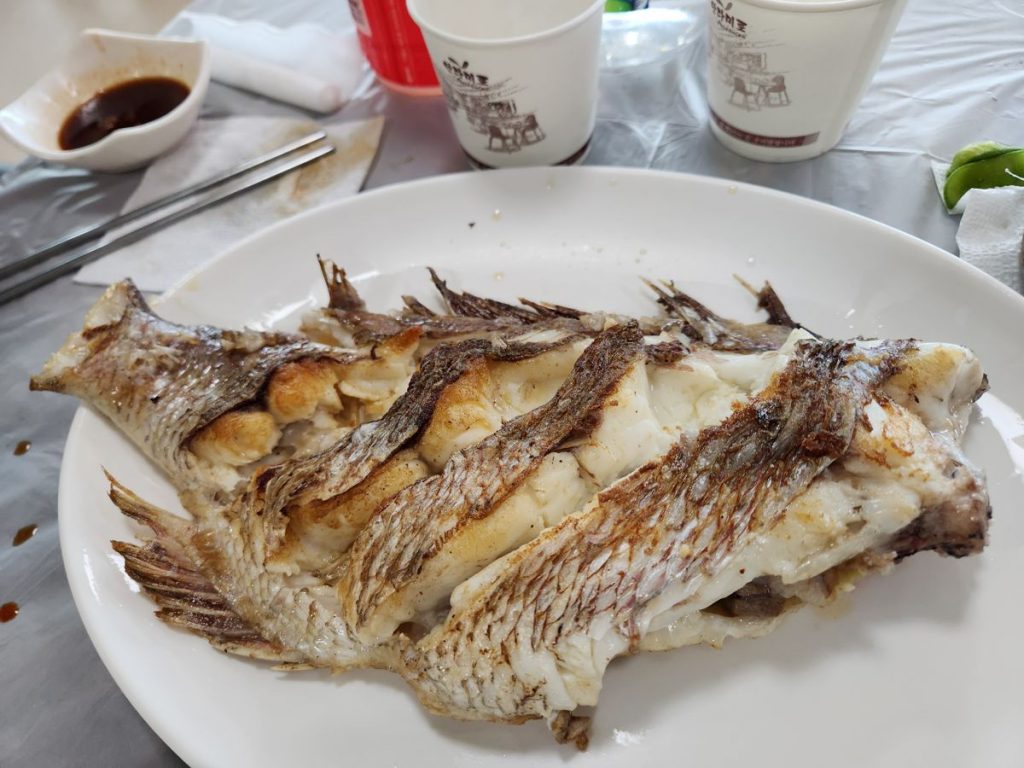
The two jumpy eels turned into deeply fried crispy chunks. It was more or less what you’d expect of fried seafood, and I was slightly surprised by its bland taste when not covered in unagi sauce.
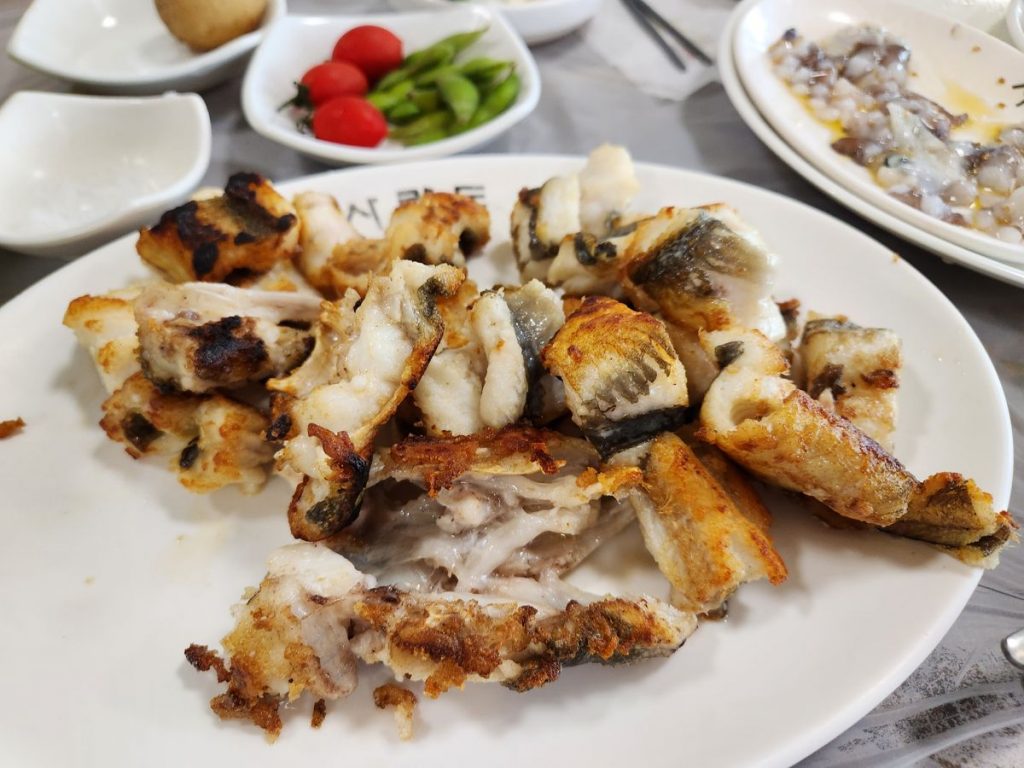
The clams and mussels were cooked into a pot of soup, which was lovely on a rainy morning.
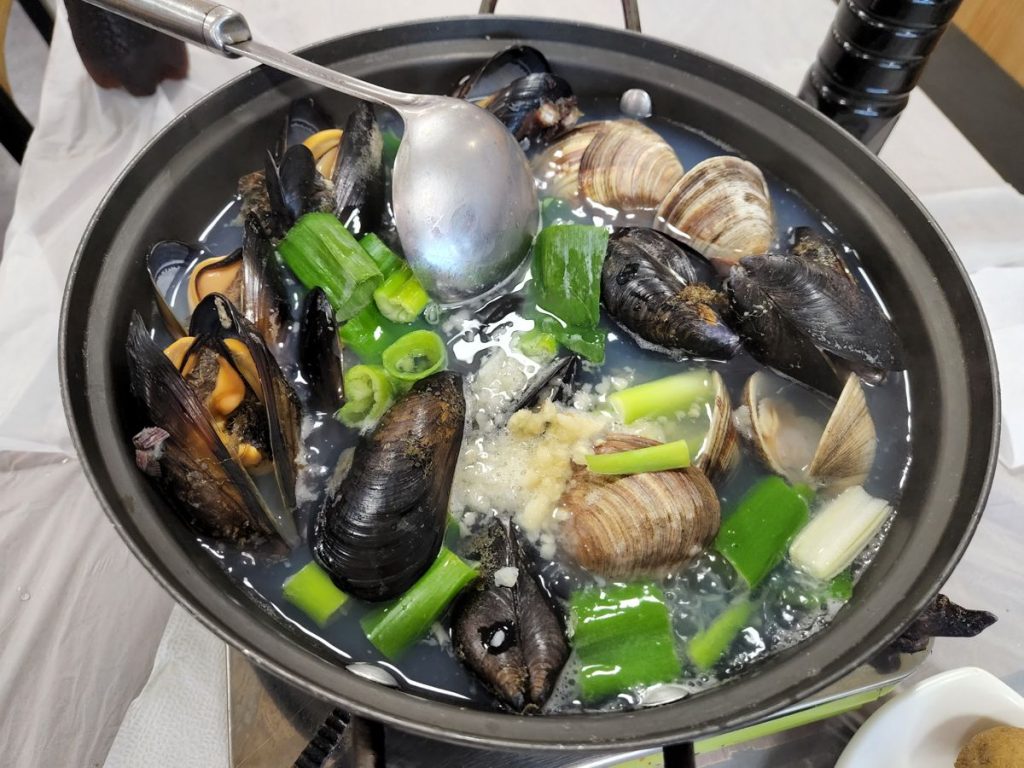
The urchin was urchin… none of us liked it before and none of us liked it now. I mainly enjoyed the thought of getting them for free when people back home sell this stuff for the price of someone’s firstborn child. It was also so super fresh that the spikes on half shells were still moving around.
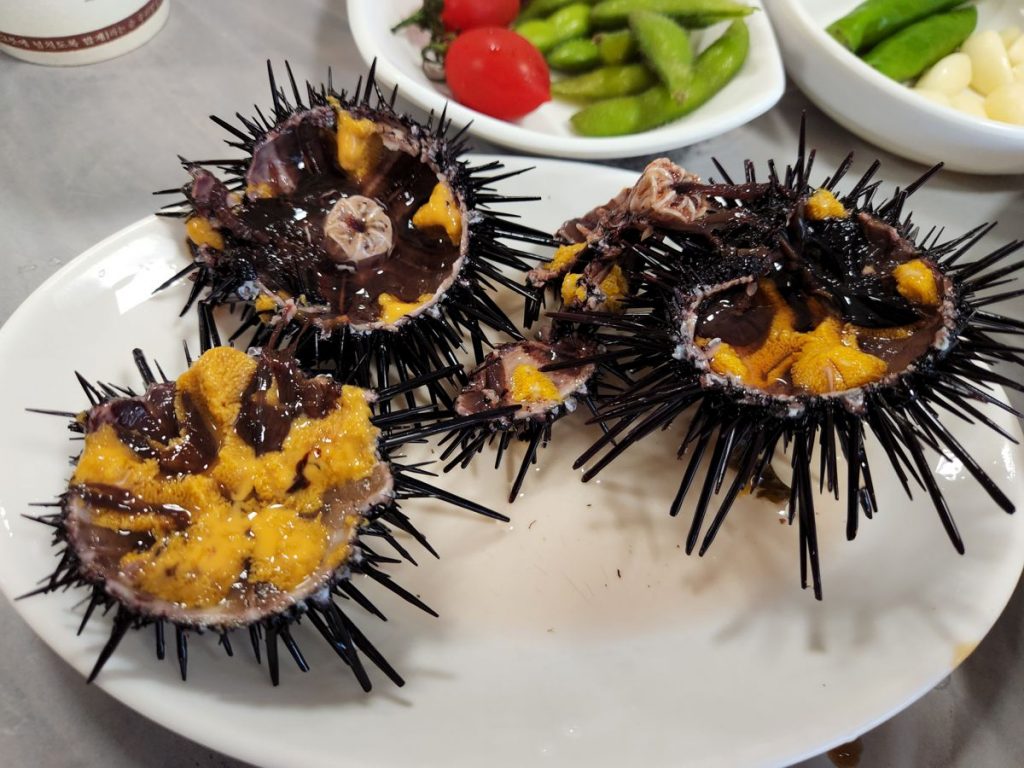
Then there was the sea pineapple, a specifically Korean delicacy and not to be confused with the pineapple fish. This animal looked like an aquatic cactus fruit, and was eaten raw sliced. I had been intrigued by its name and appearance, but did not expect to enjoy eating it. Well indeed… if the urchin tasted like diluted mushy sea water, this weirdo was the concentrated slimy sea water. Eating the sea pineapple was as enjoyable as taking a wrong breath while snorkeling and getting all that salty fishiness into your mouth. I strongly encouraged the family to try it, but had to finish what I started.
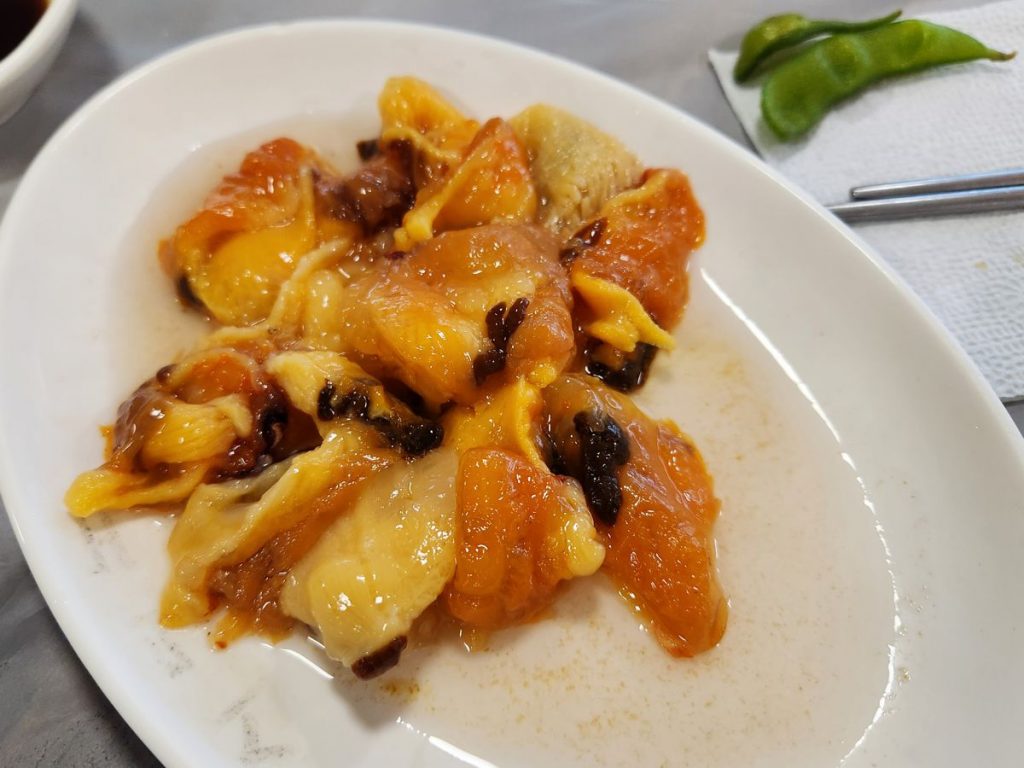
The star of the breakfast was the octopus, the most intelligent among our food as demonstrated downstairs in their almost-successful escape attempt. Raw octopus was another Korean delicacy that we had been intrigued by but were not sure we’d try. Several people die each year eating this dish, after all, and we had never attended a safety training course. So when the chopped-up pieces of wiggly octopi arrived, looking just like a plate of squirmy worms, we were as curious as we were concerned. To begin, we chewed each piece an obligatory 20 times to kill it real dead in order to prevent choking hazard.
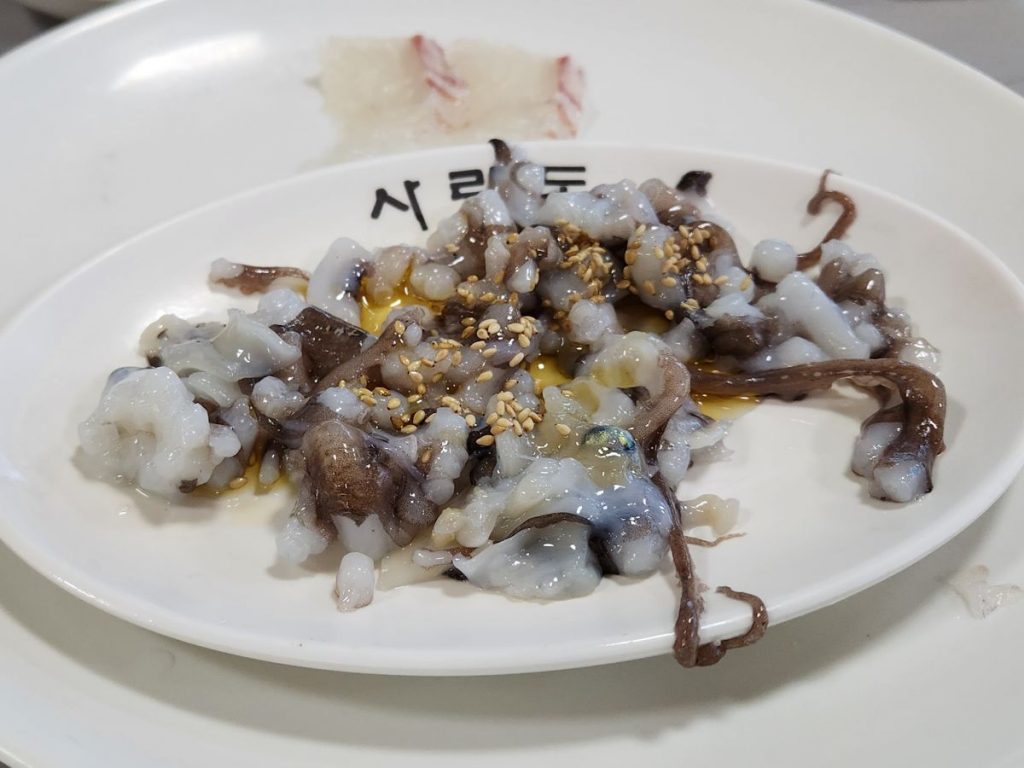
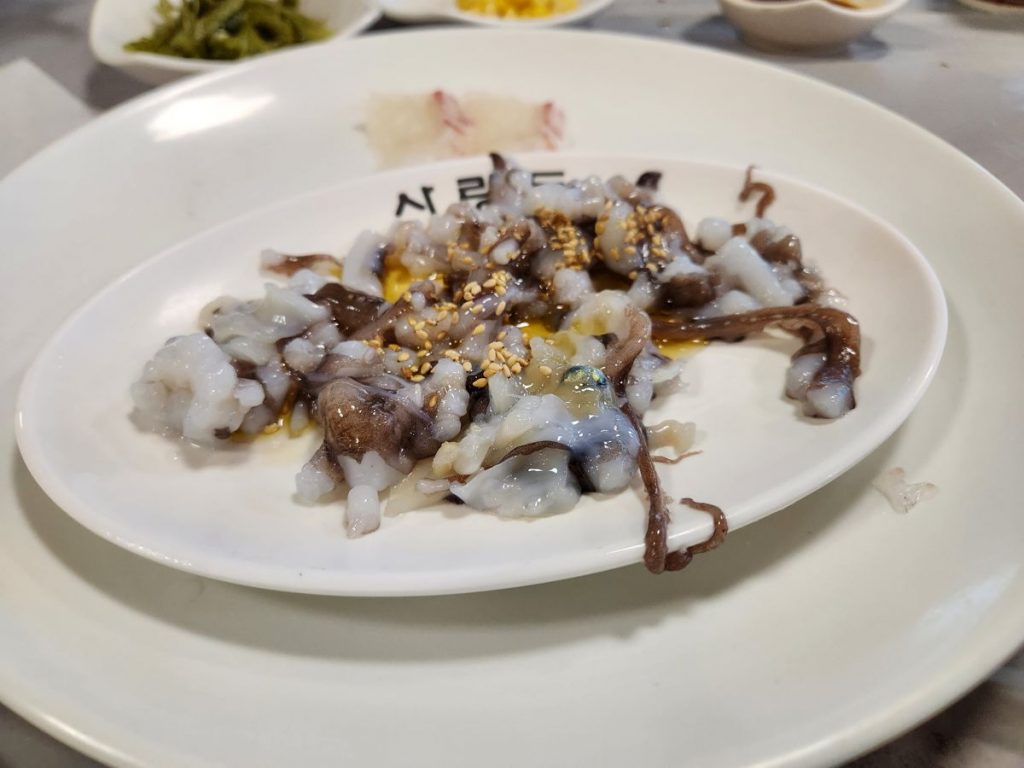
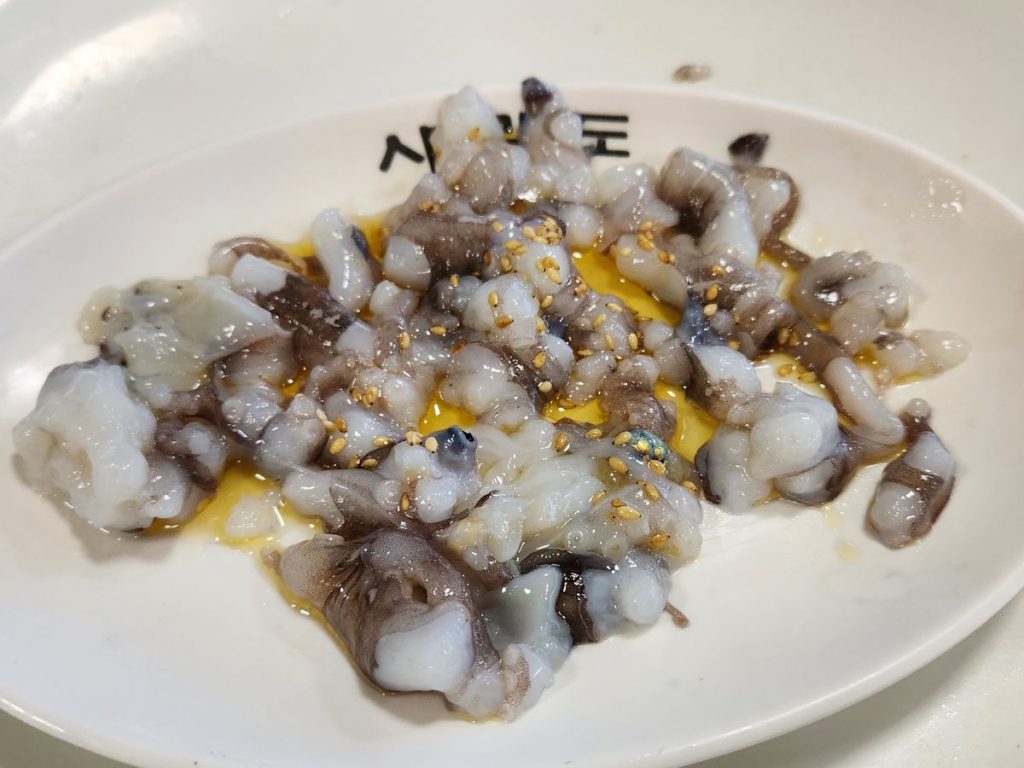
A minute later, I learned that eating raw octopus was the most pleasant surprise on this whole trip. I prepared myself to feel disgusted, but ended up enjoying it so much that I’d crave it every now and then. The kids liked it, too. There wasn’t much of a flavor, despite being covered in sesame and sesame oil. However, I loved its unique texture and mouthfeel. It’s less chewy than cooked octopus, and had a slight crunch to the bite. The zombie tentacles still moving around and sucking onto things made the food “sticky” to the mouth, tongue, and teeth, creating a sensation akin to popping candy and peppercorn. It was a feeling so different from all other foods I had tried.
Korea & Japan 2024 Index
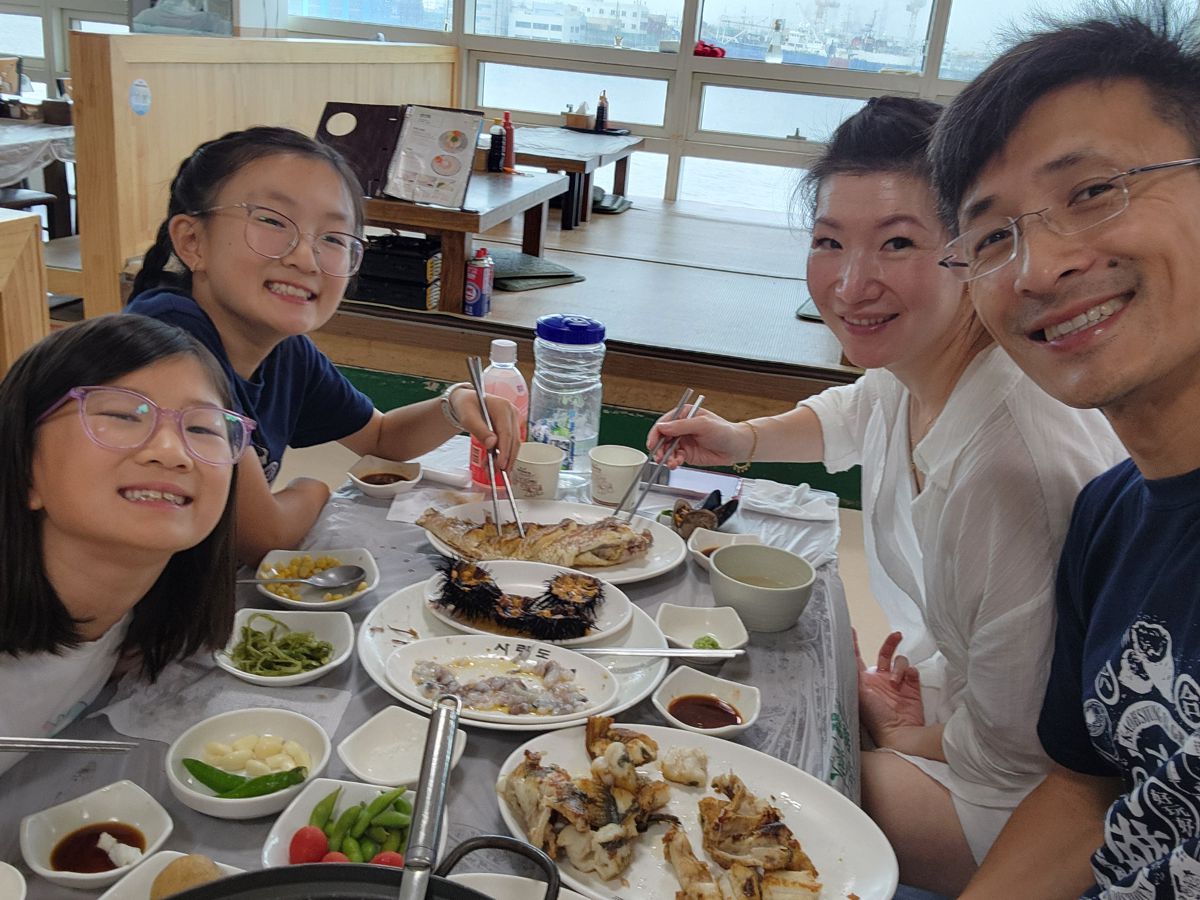
No Comments